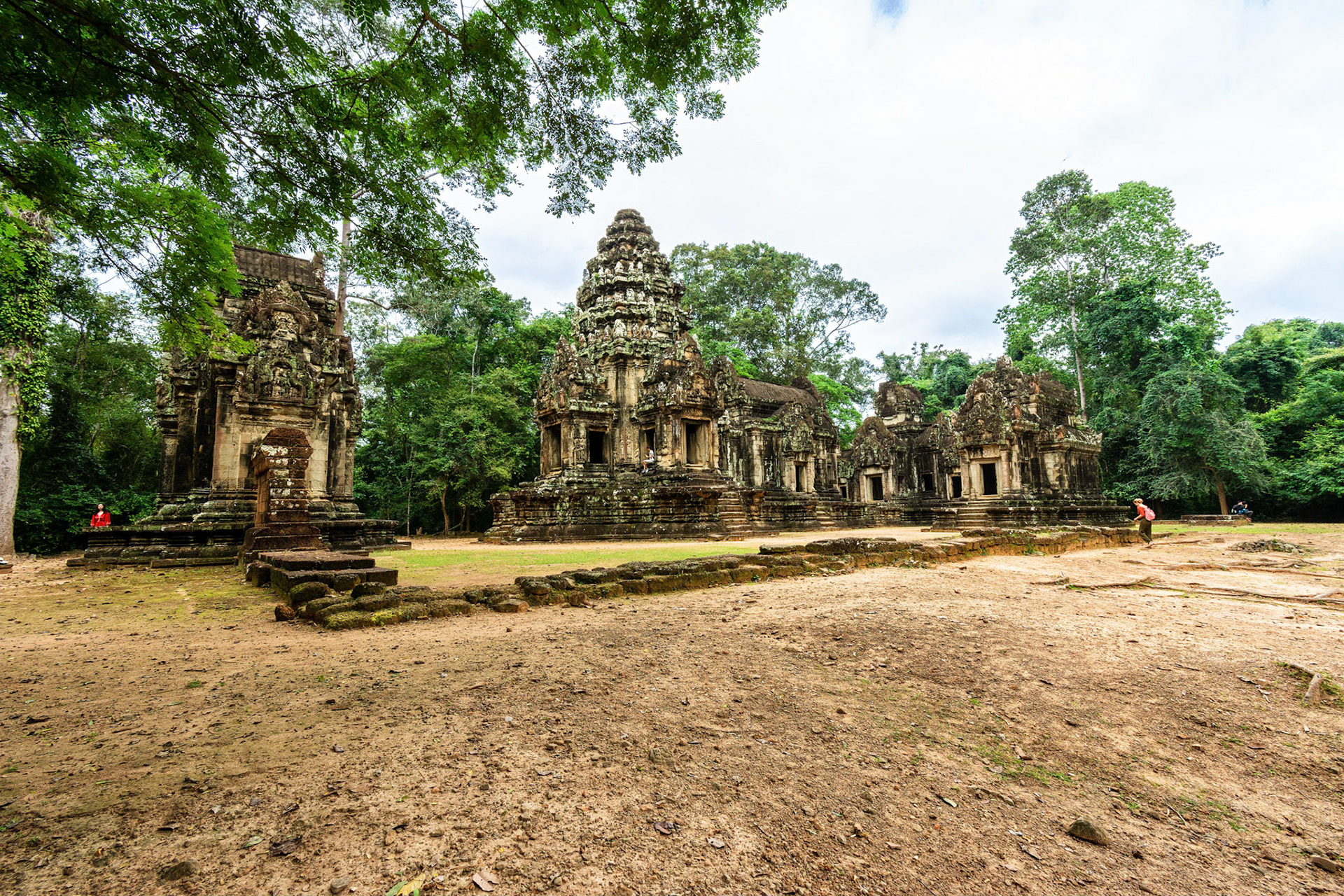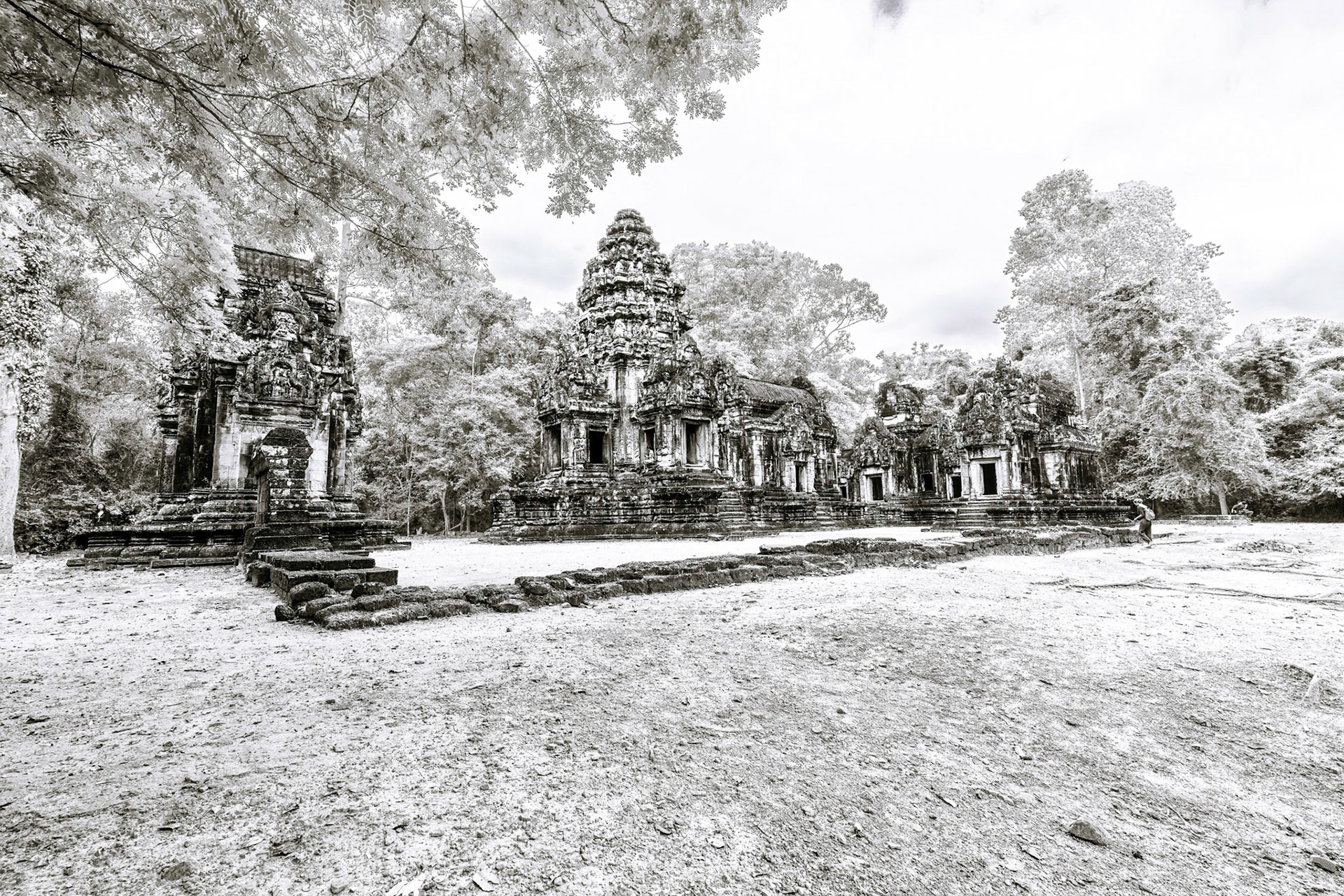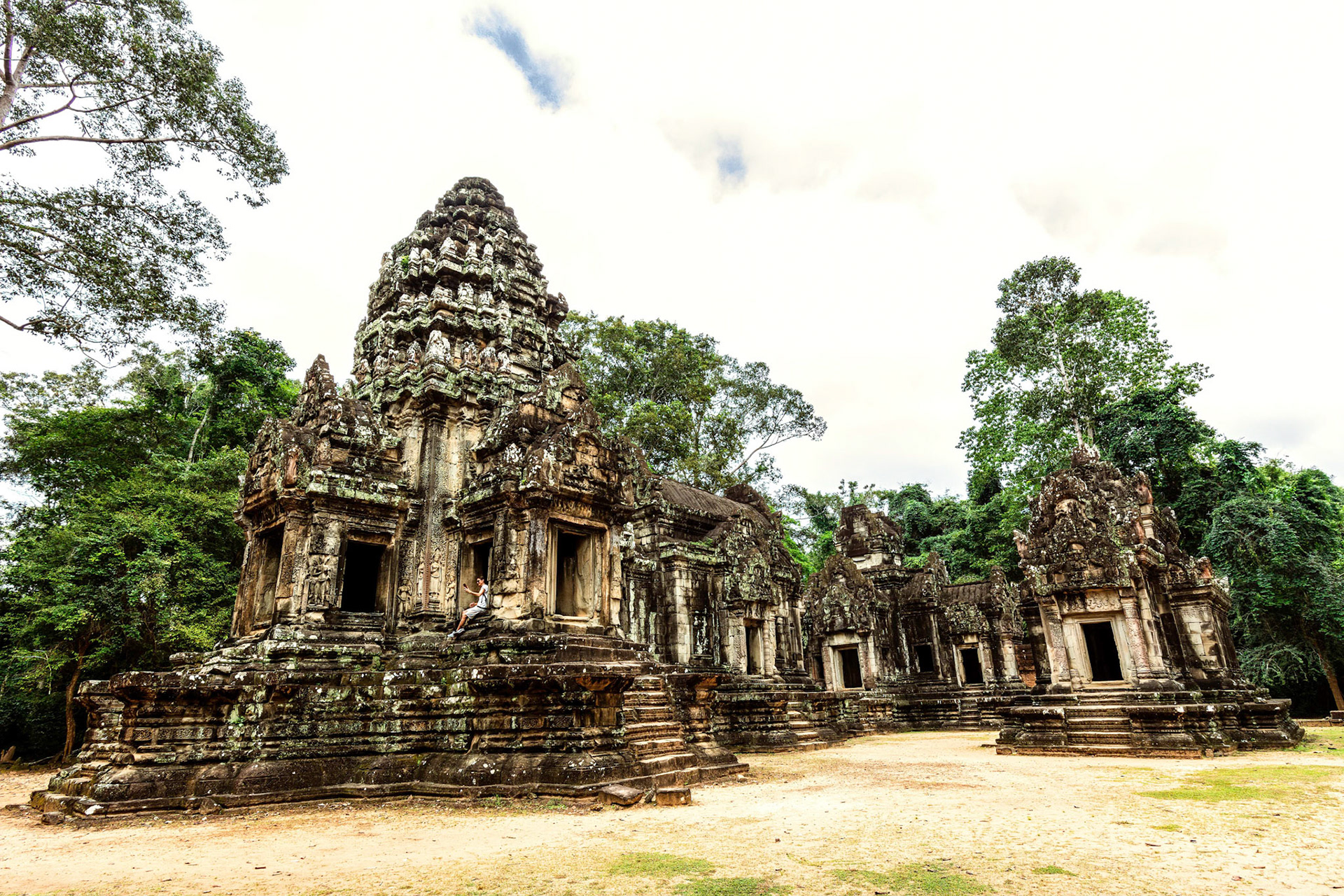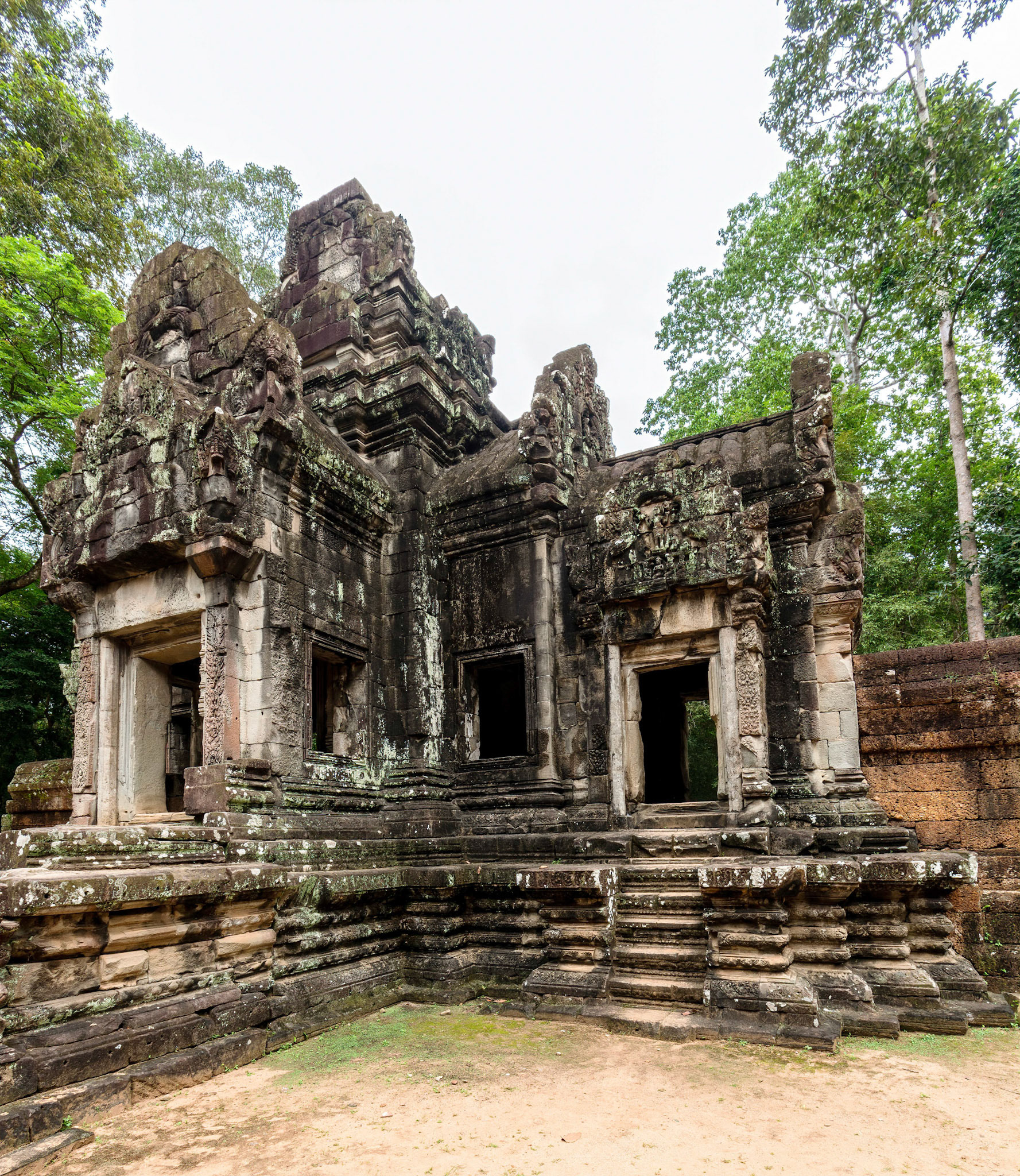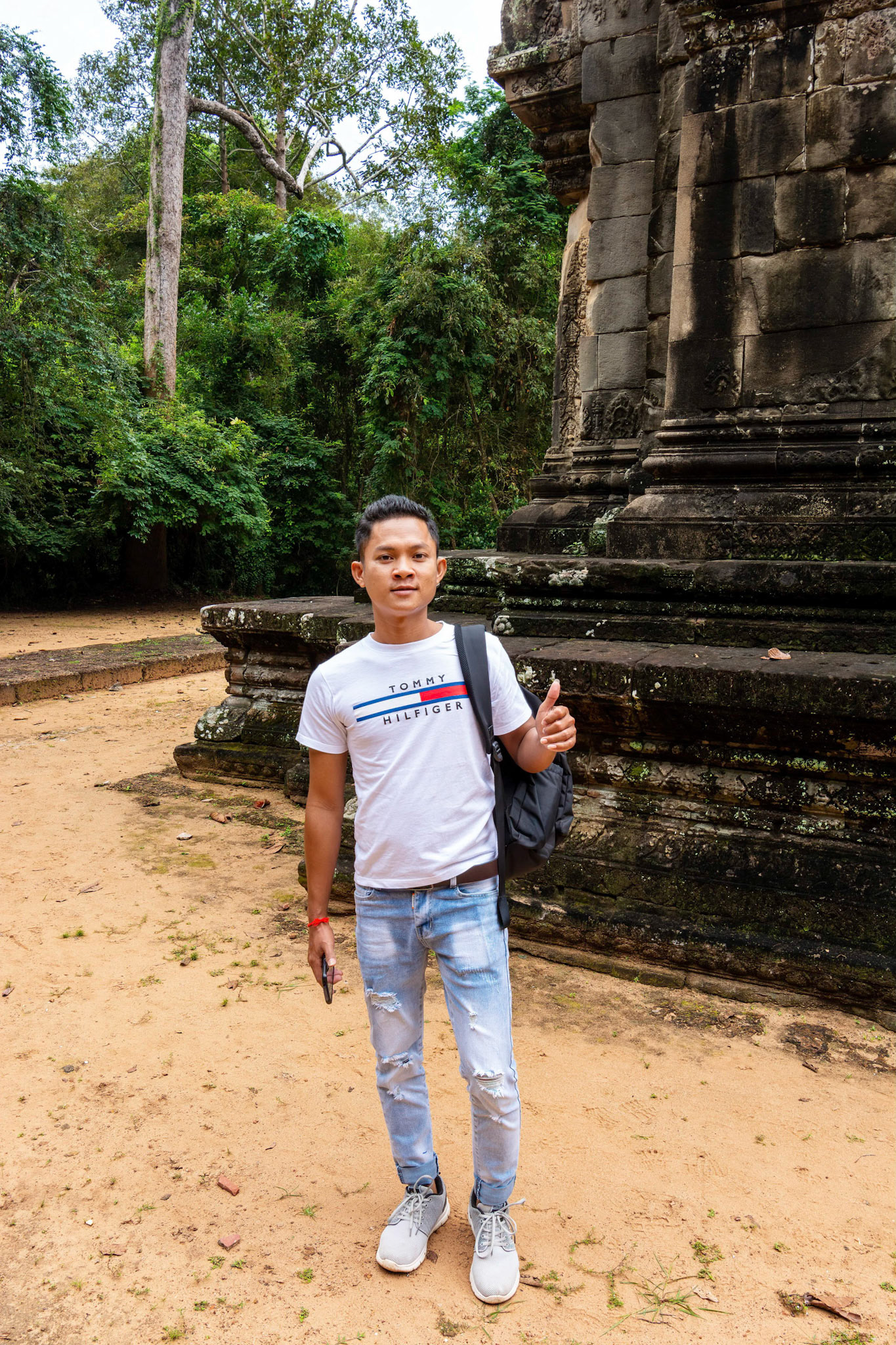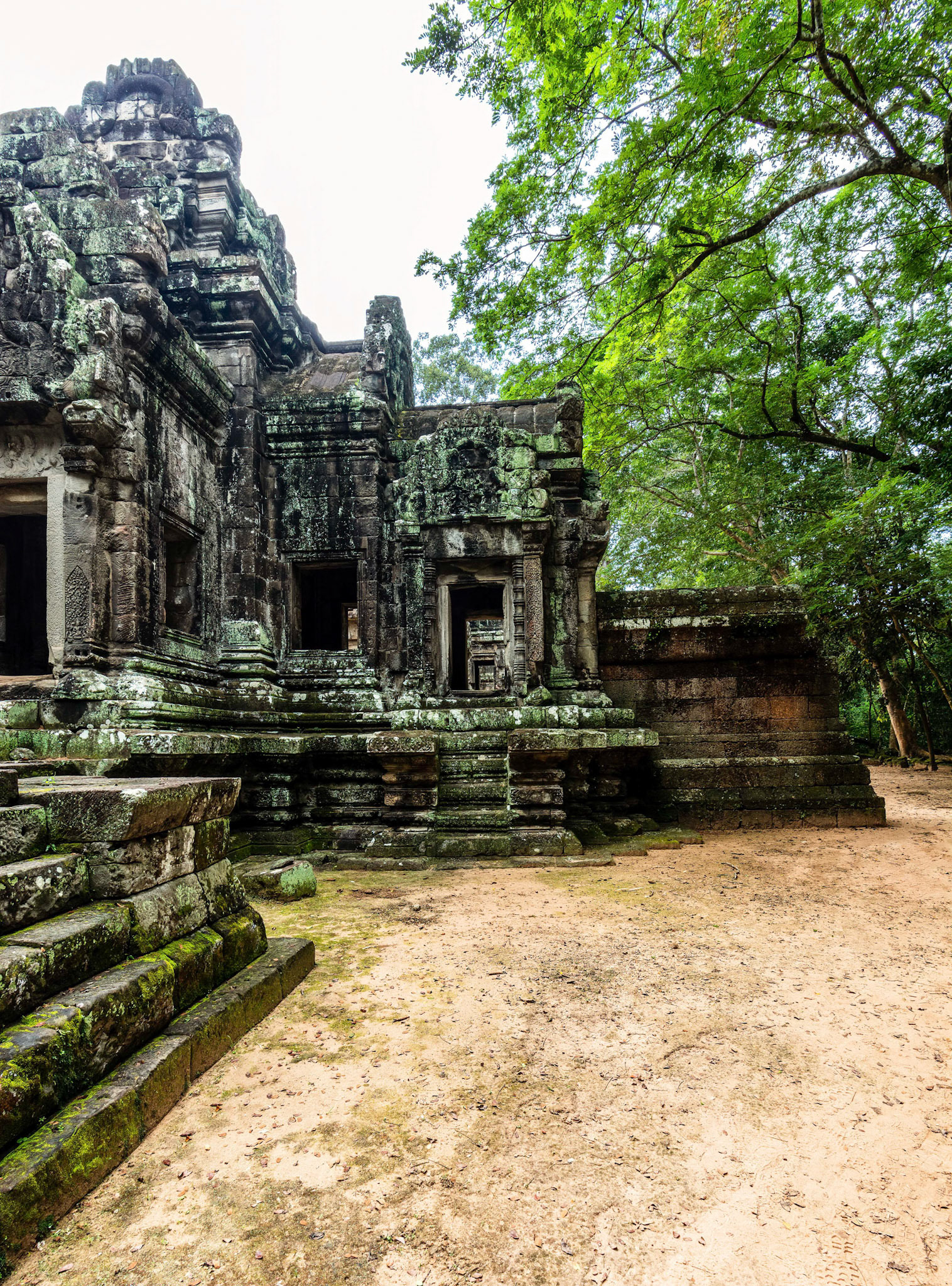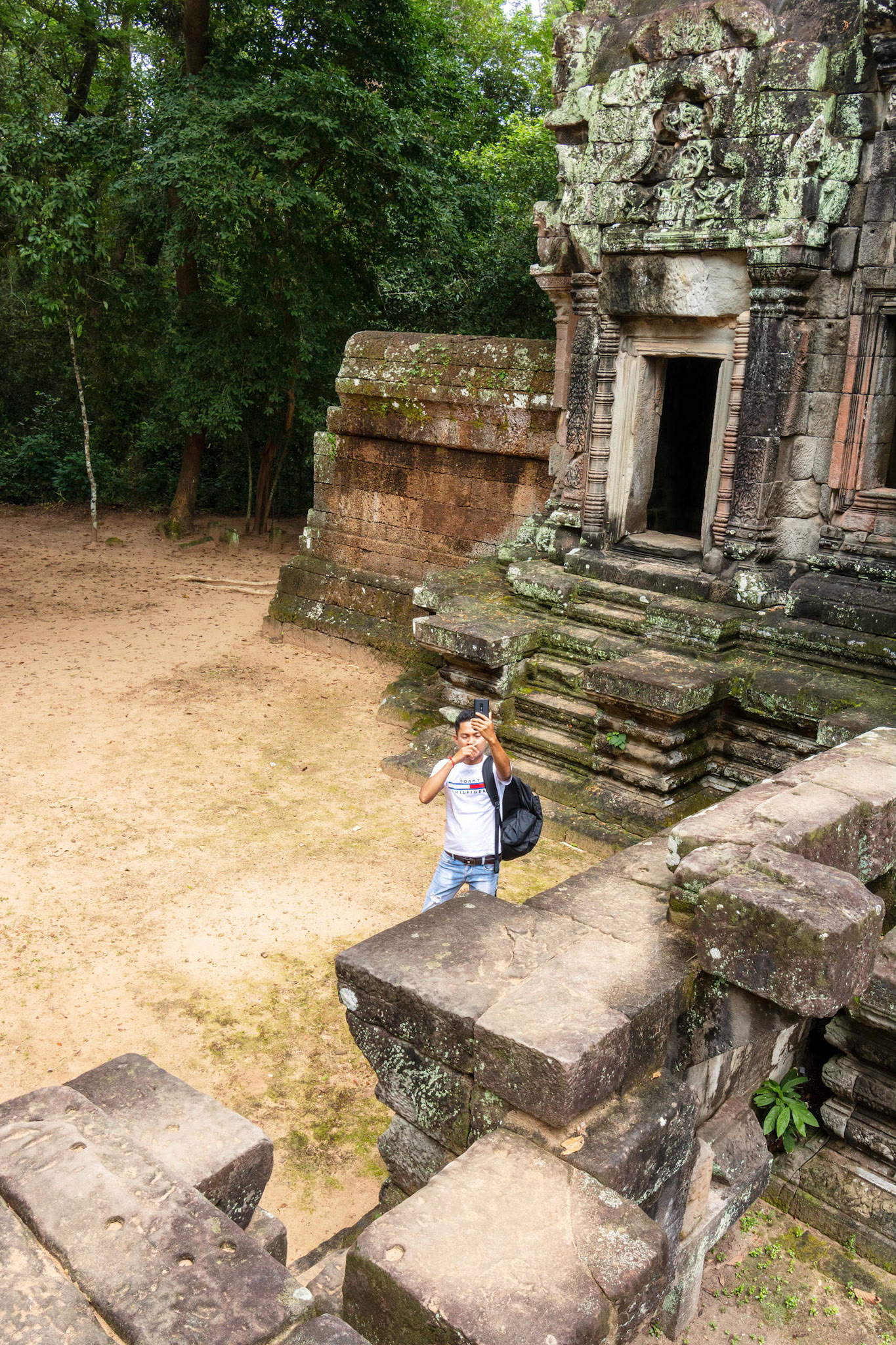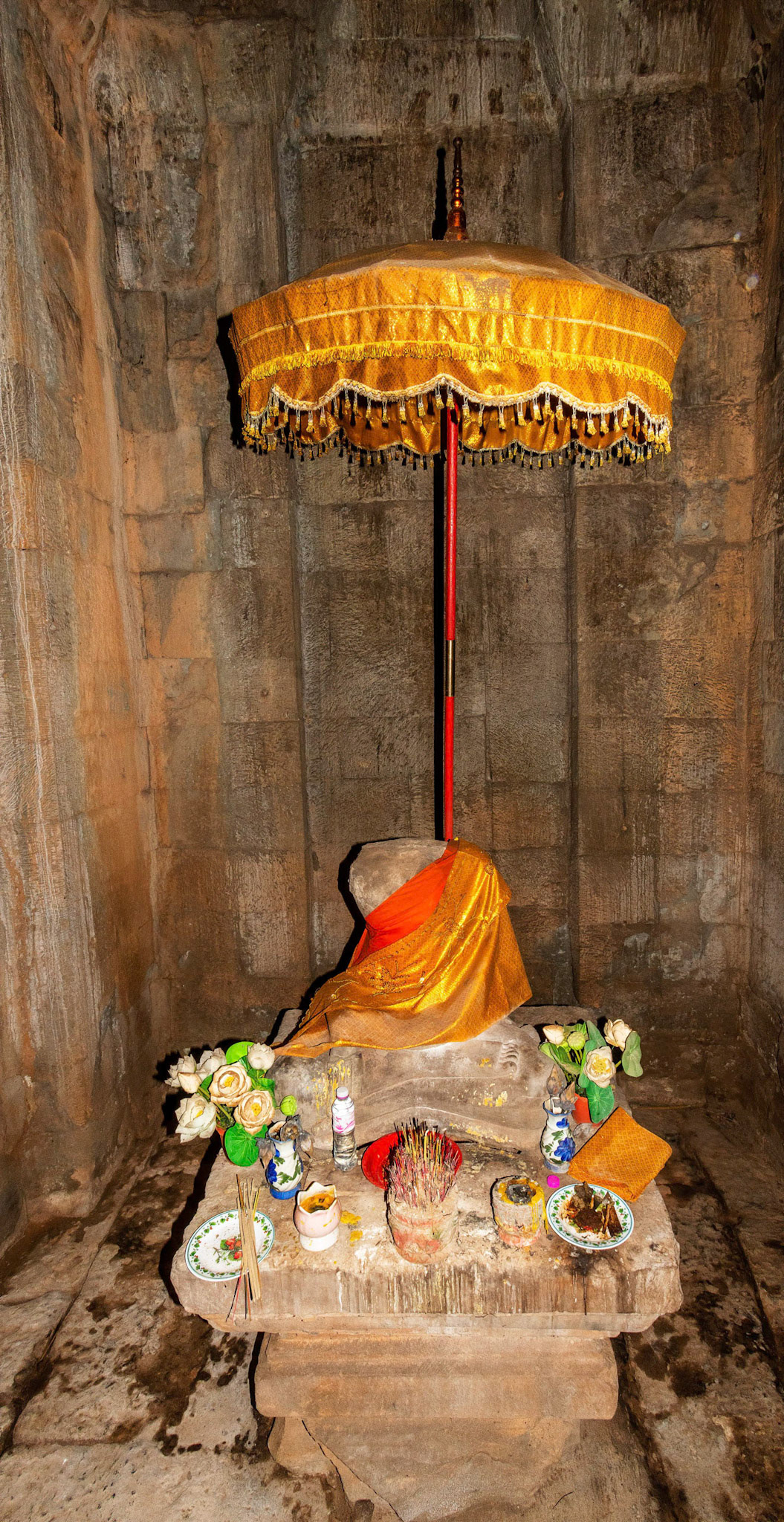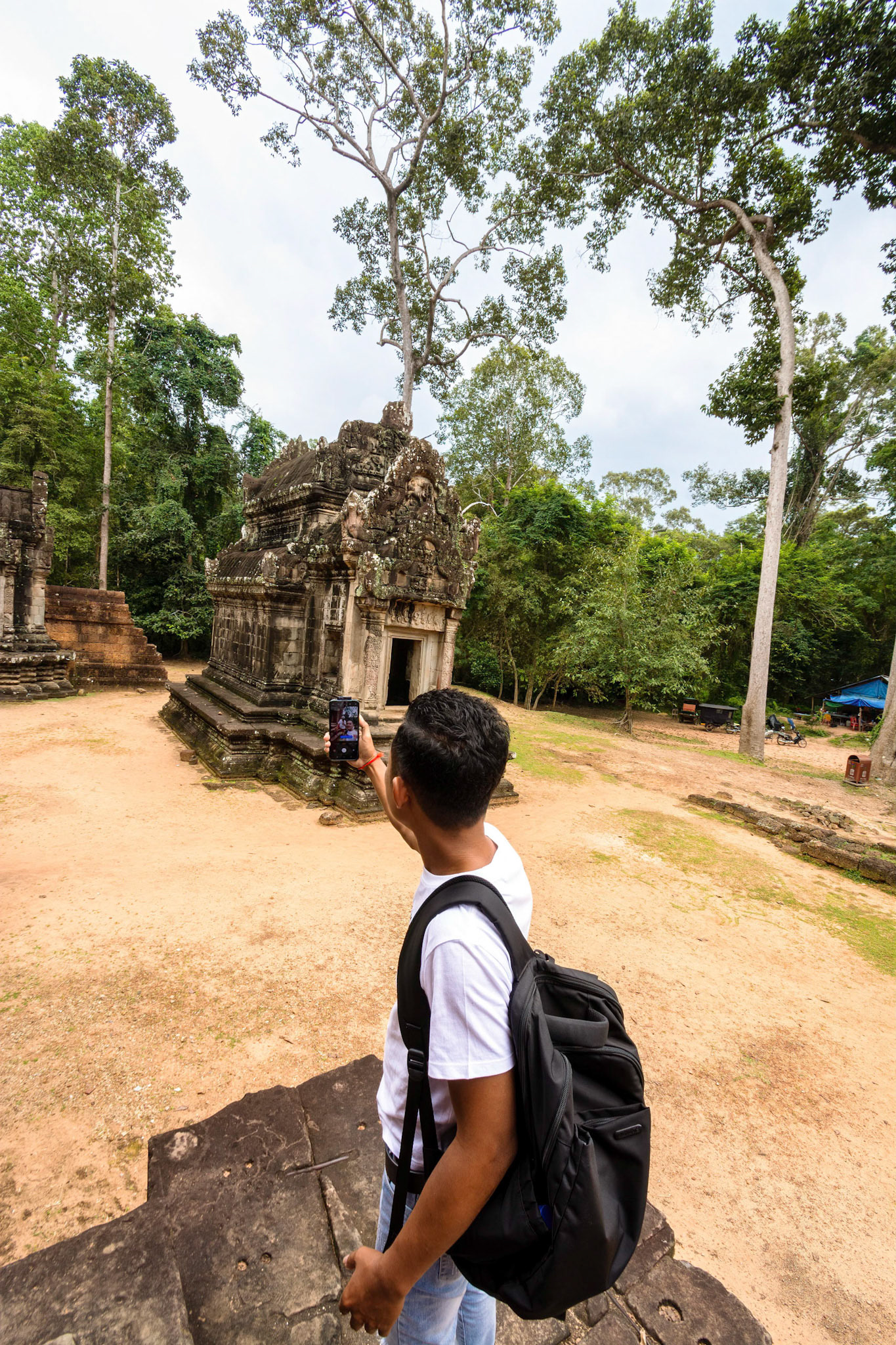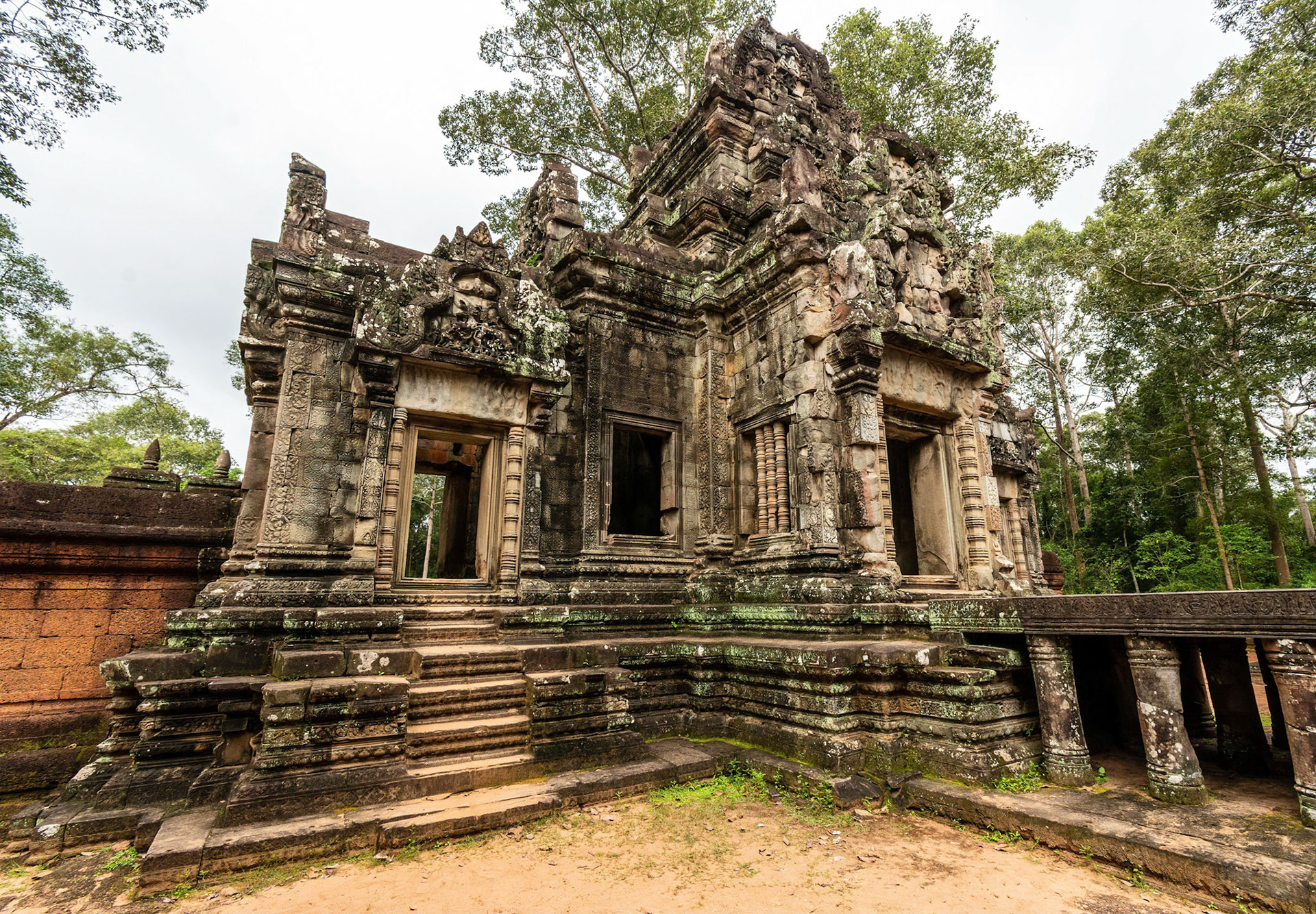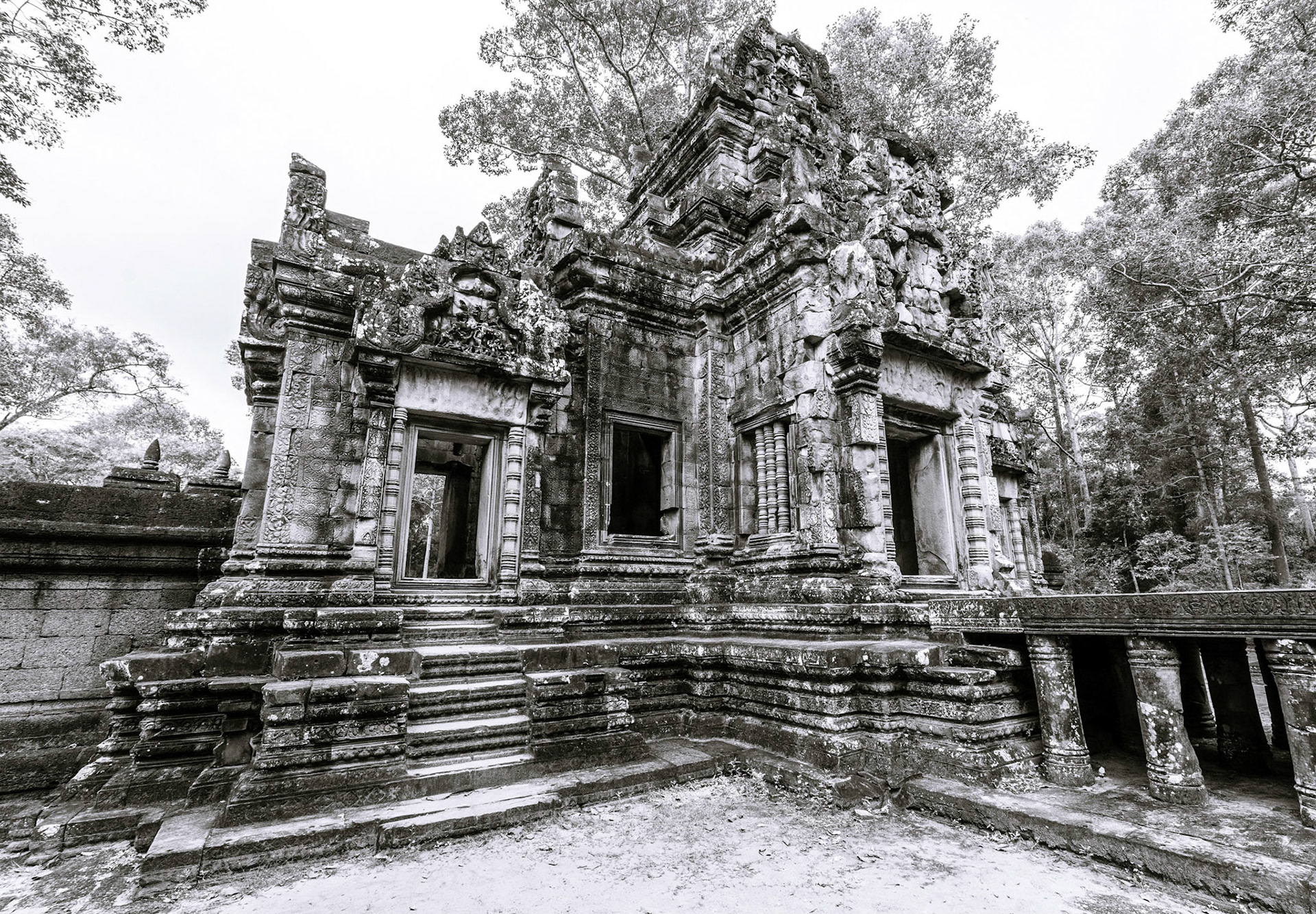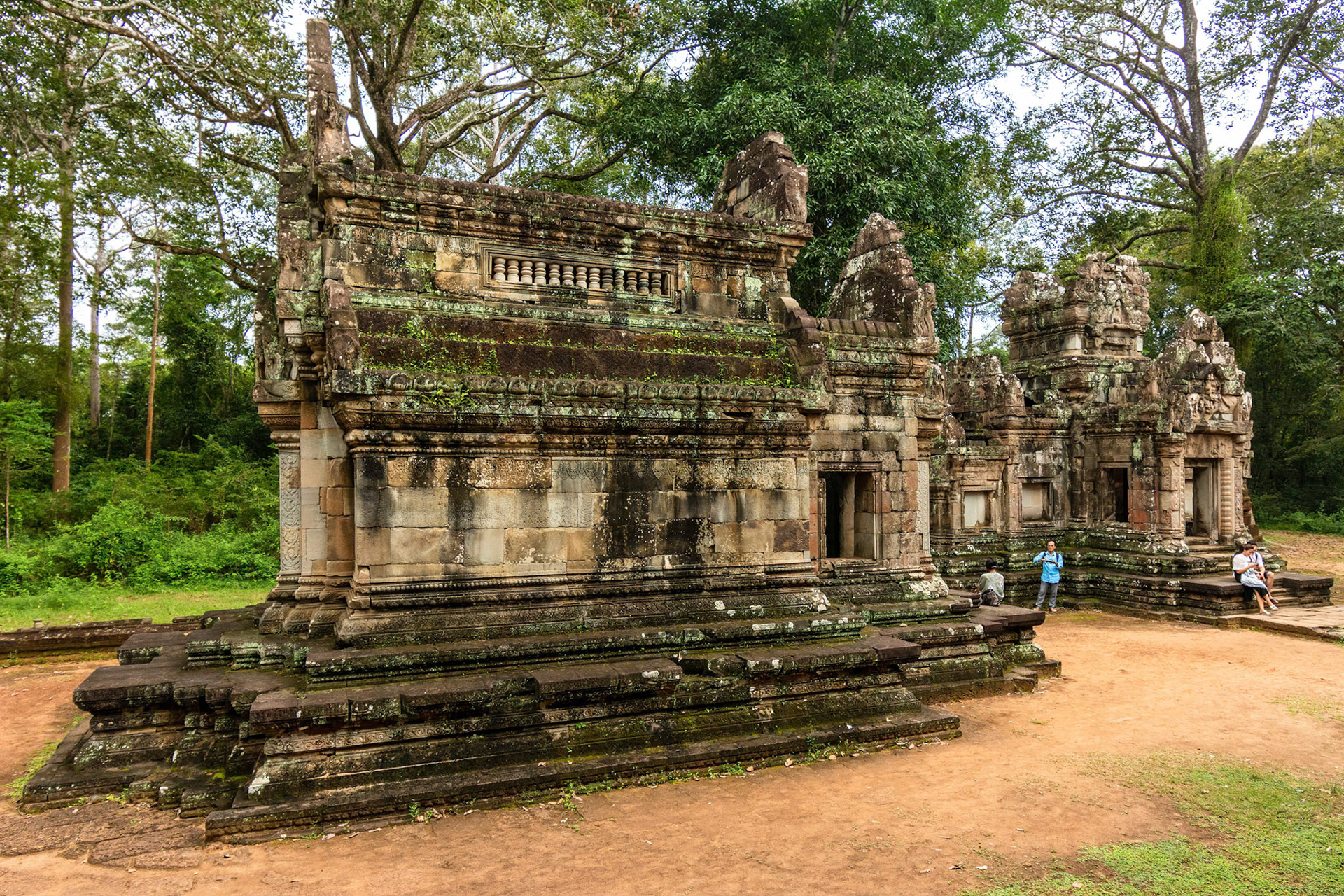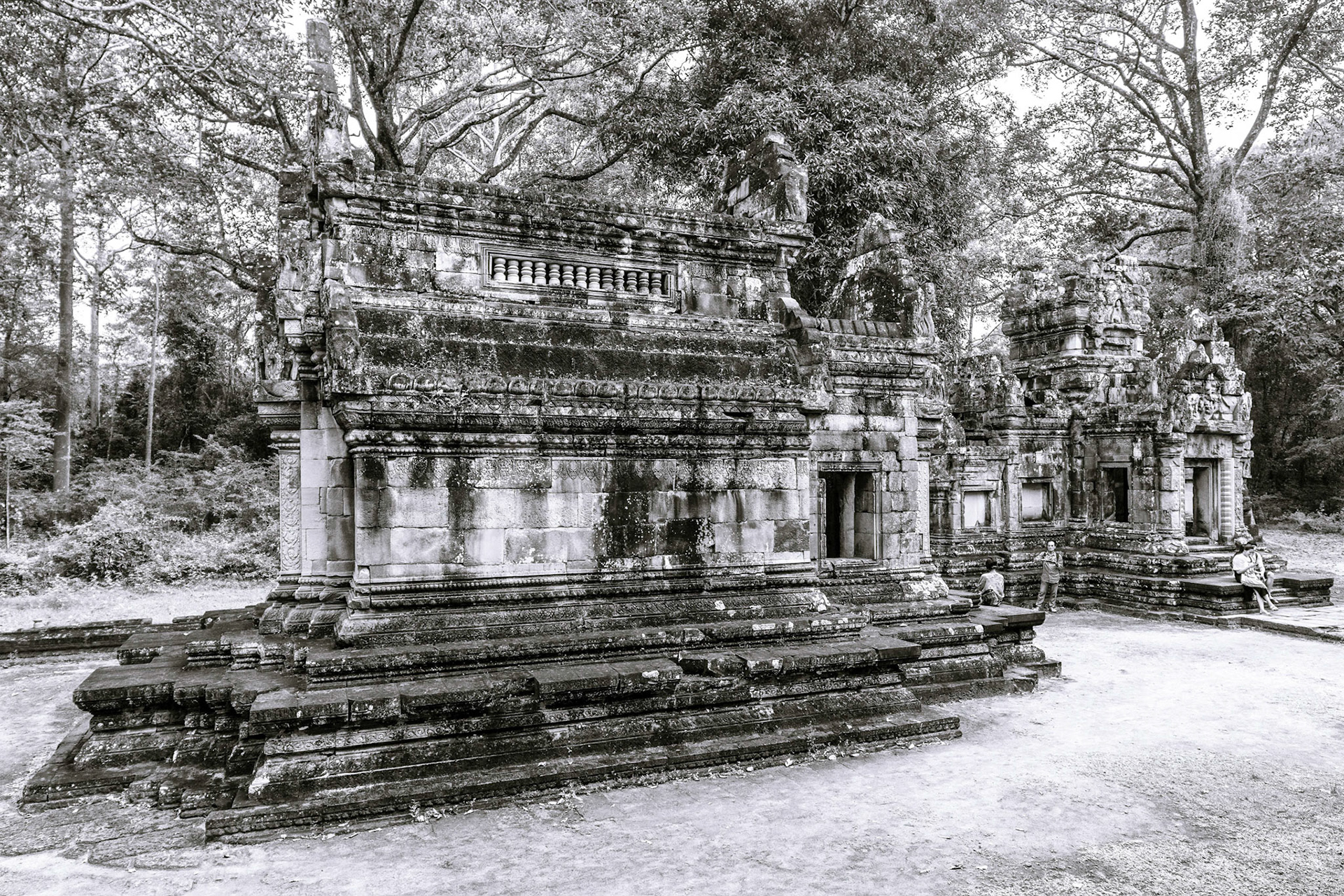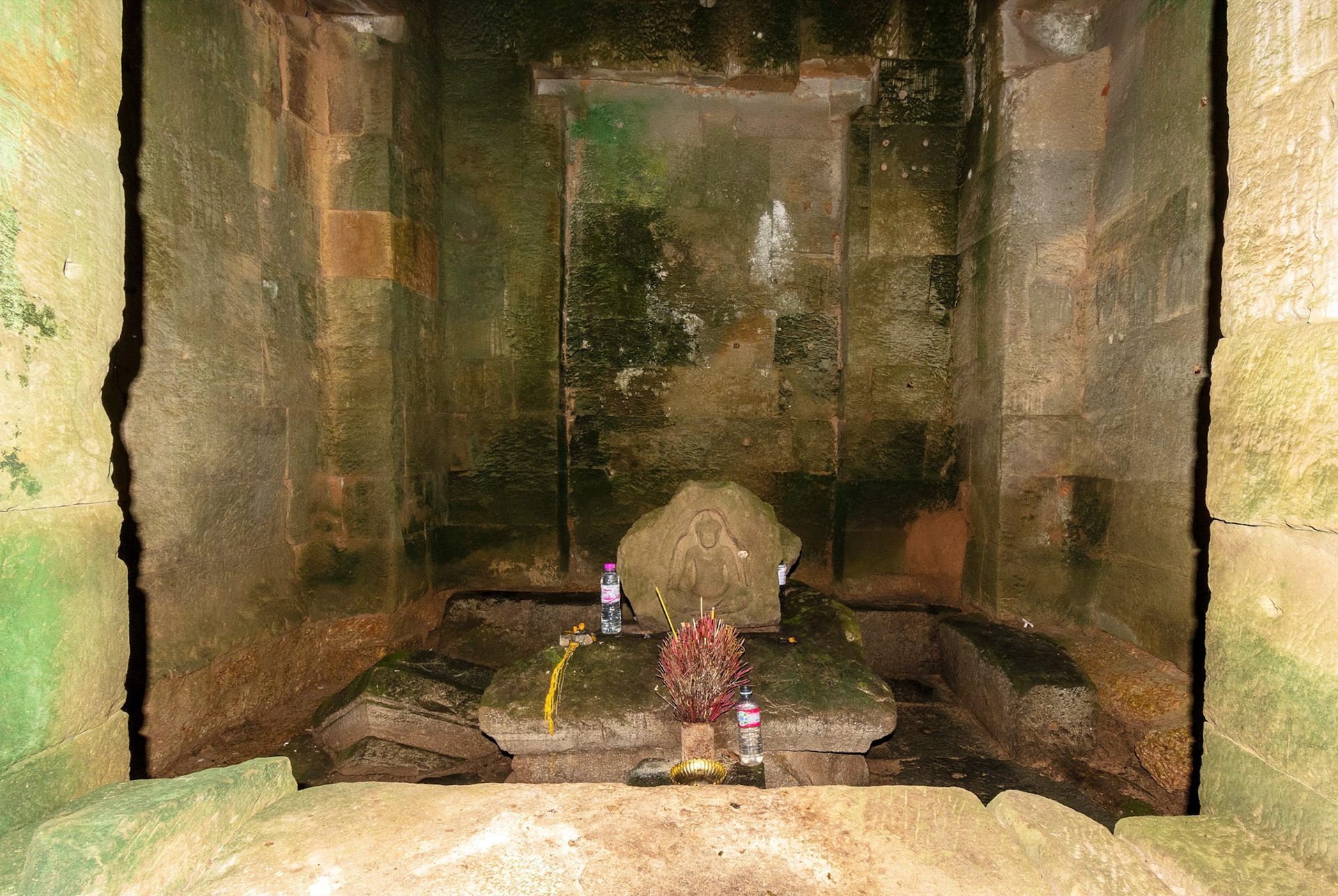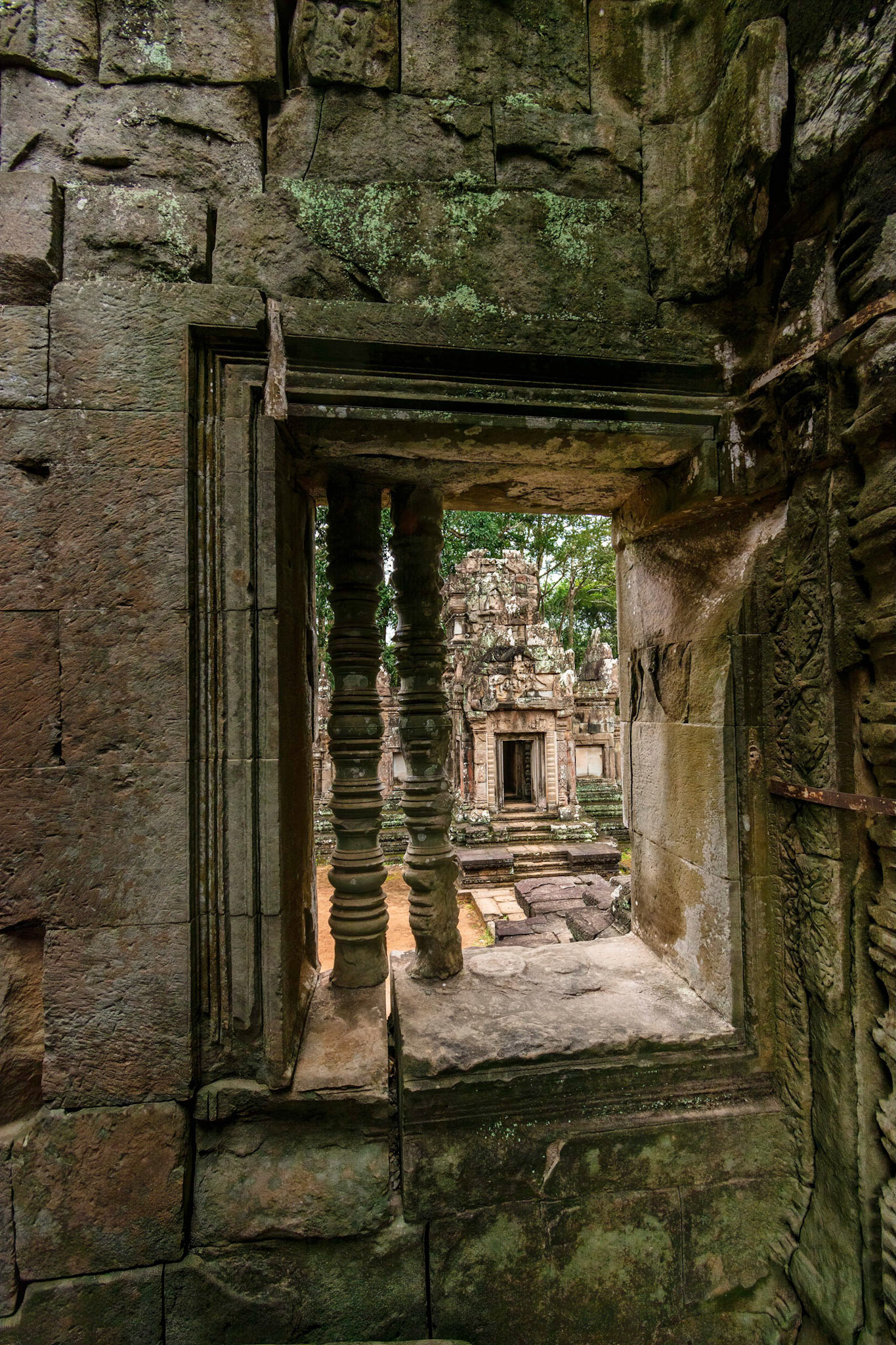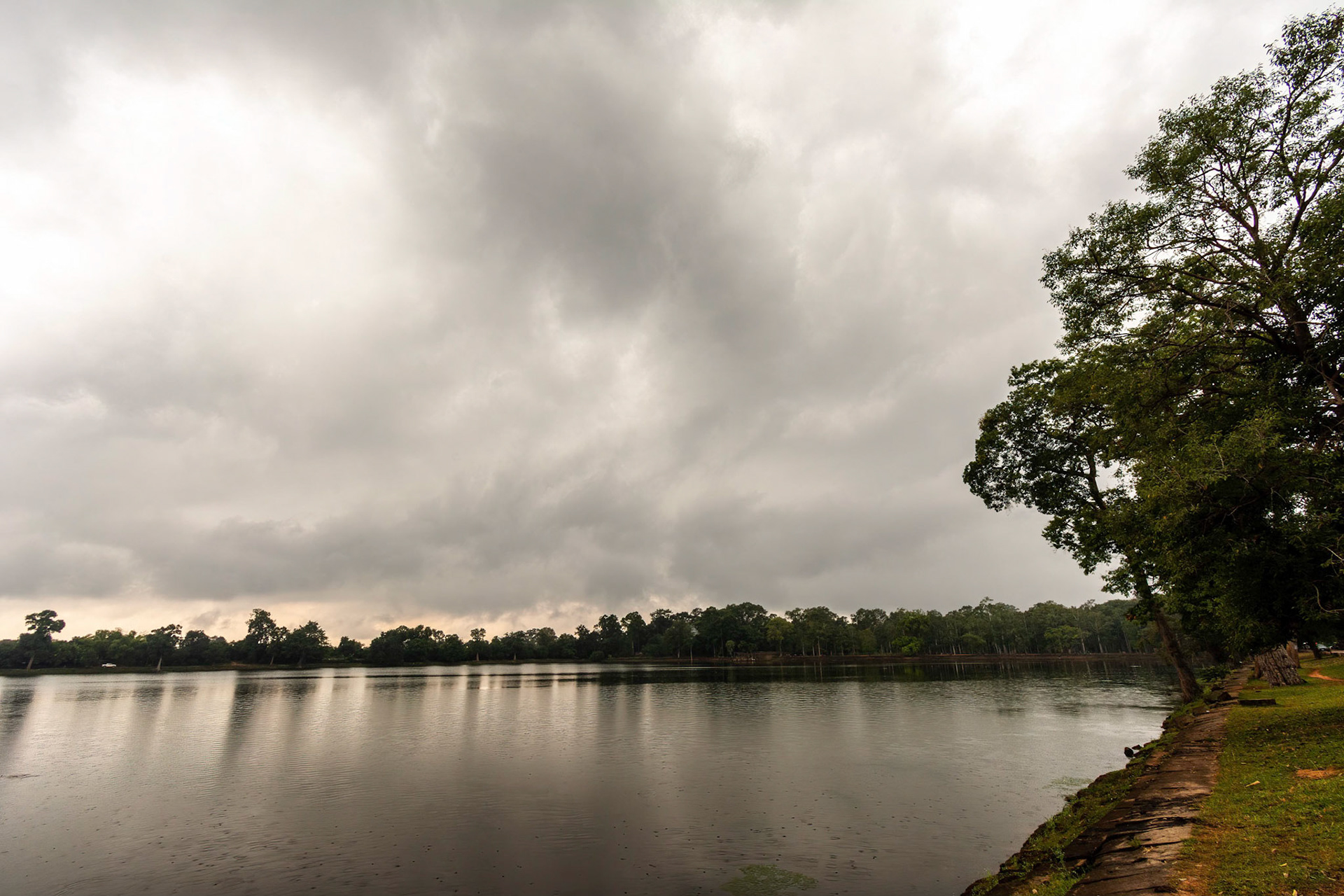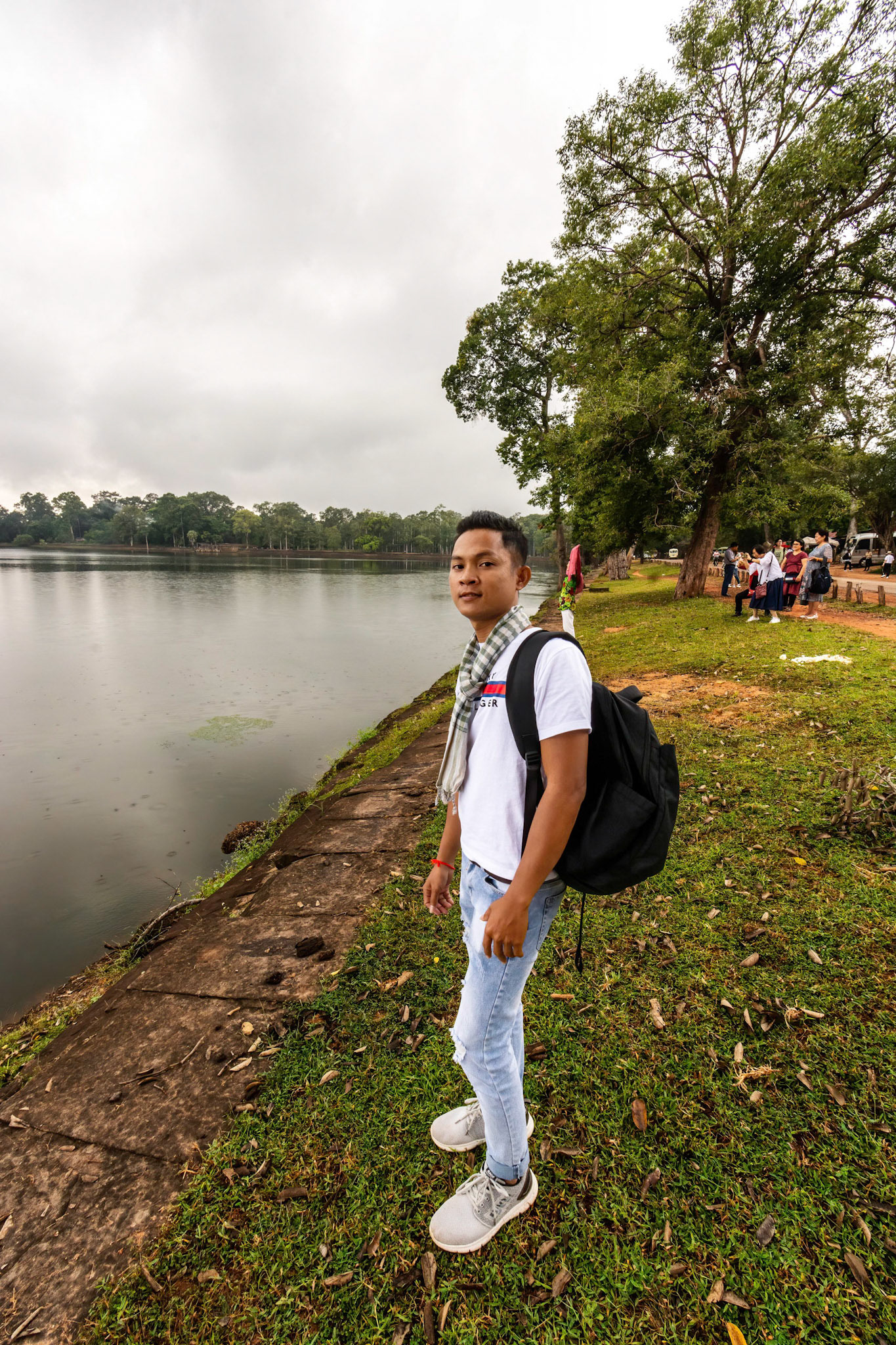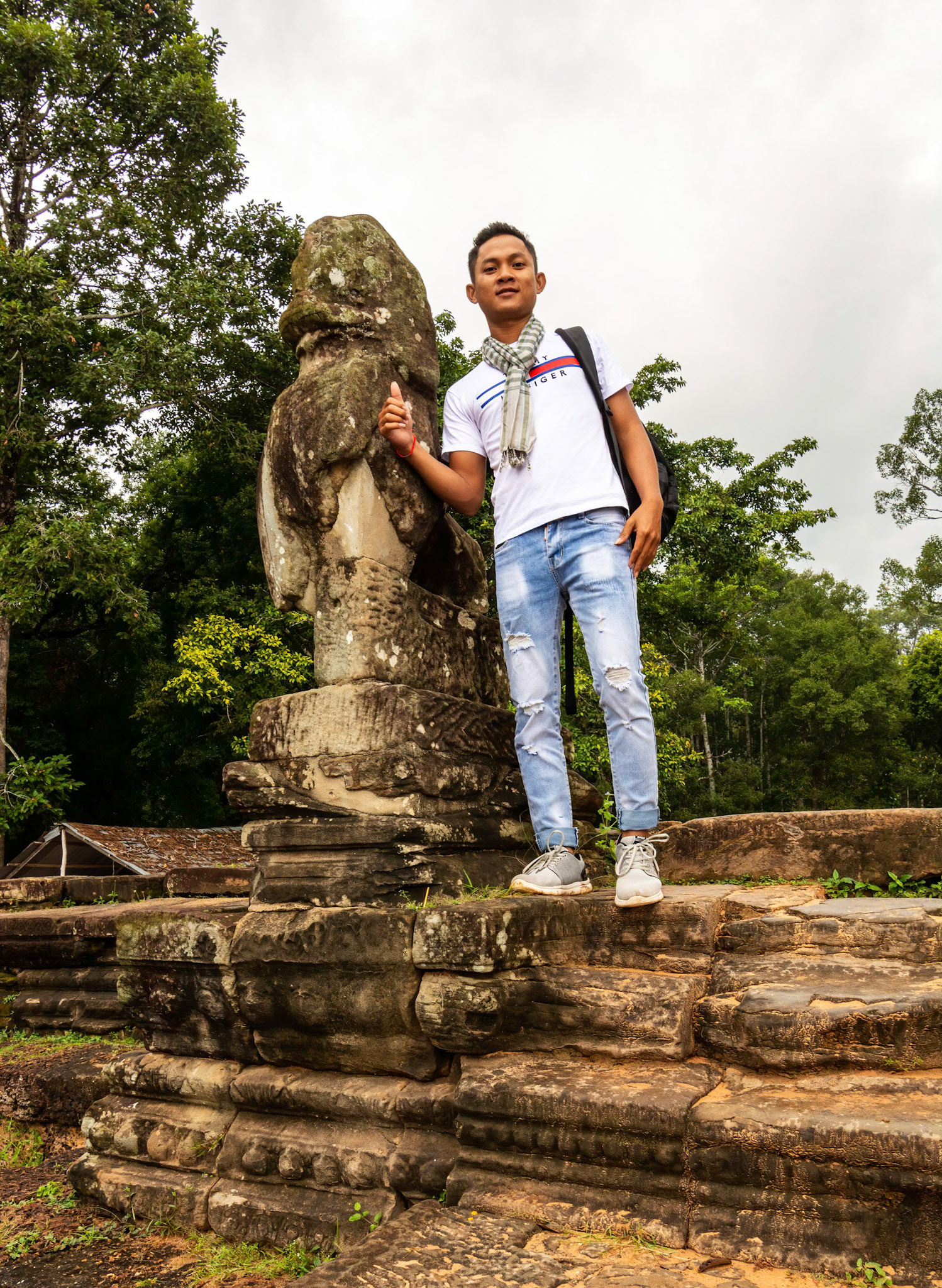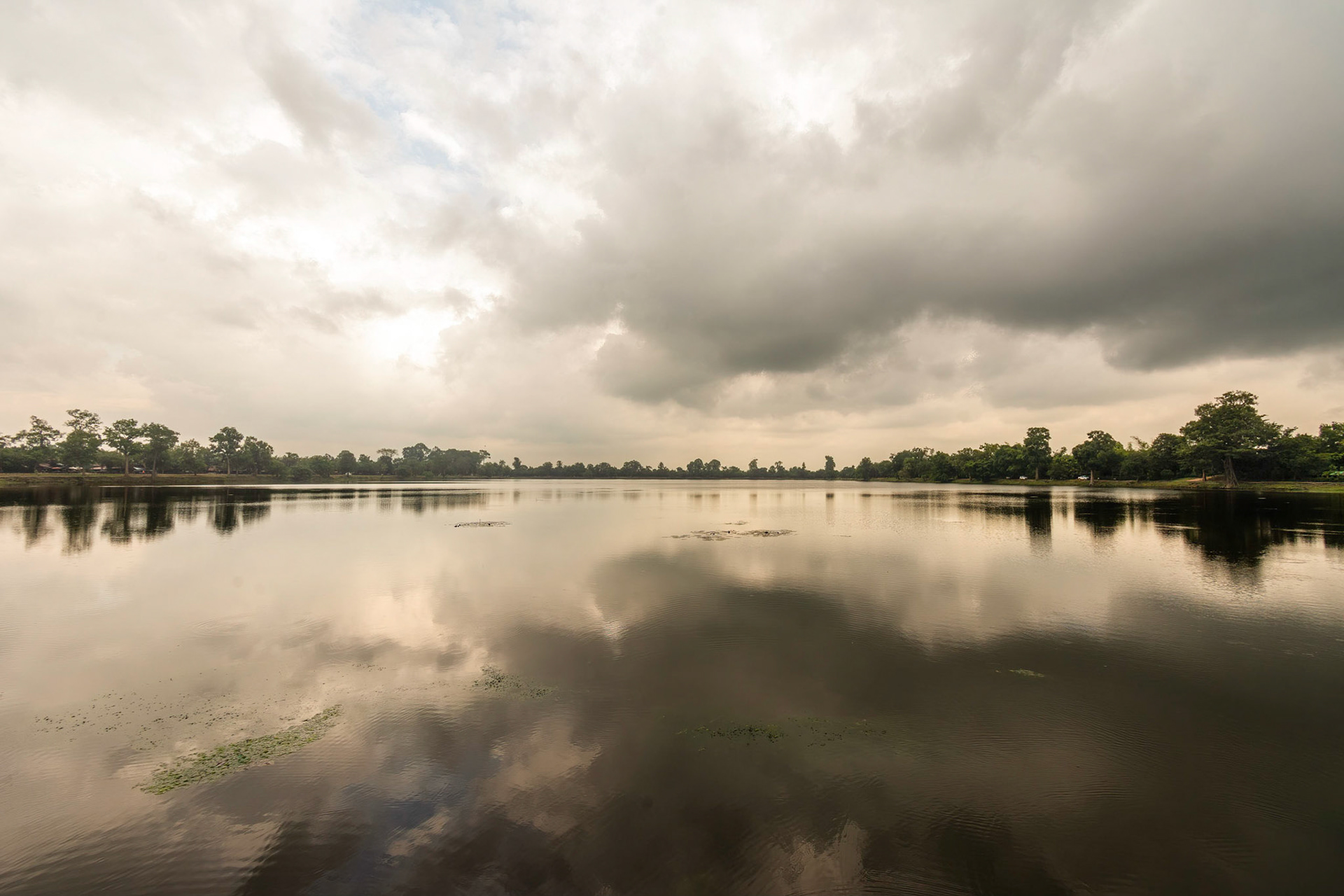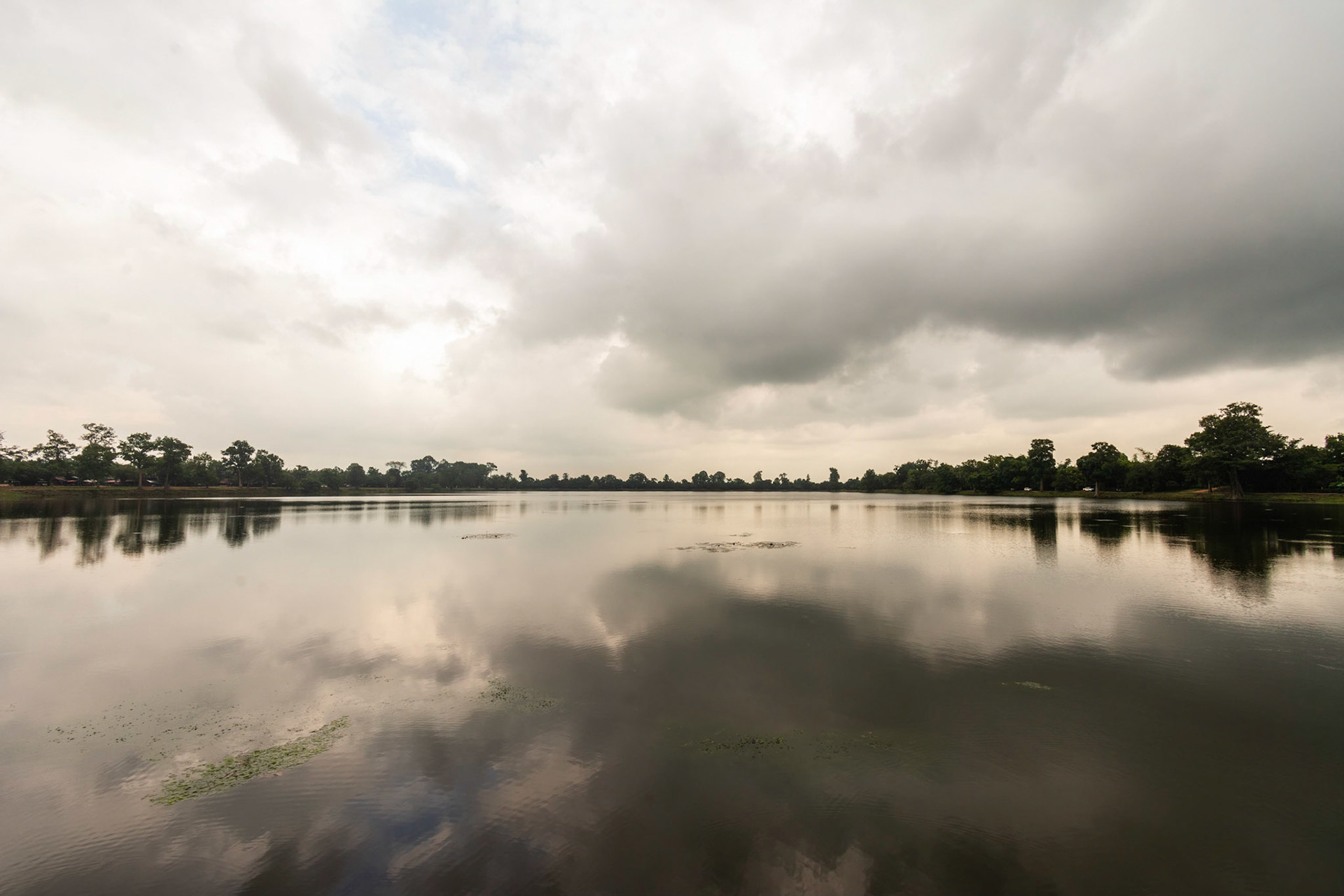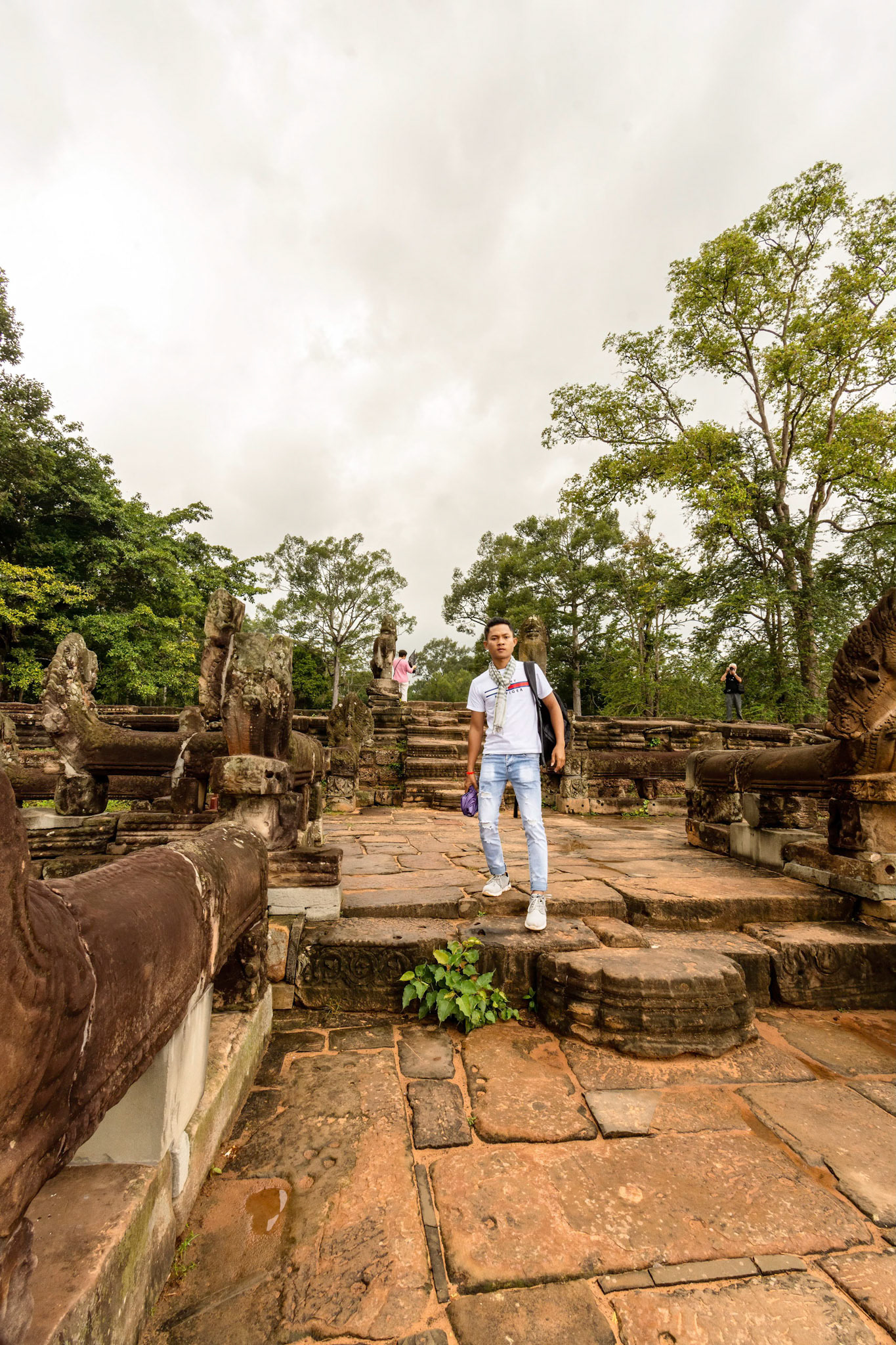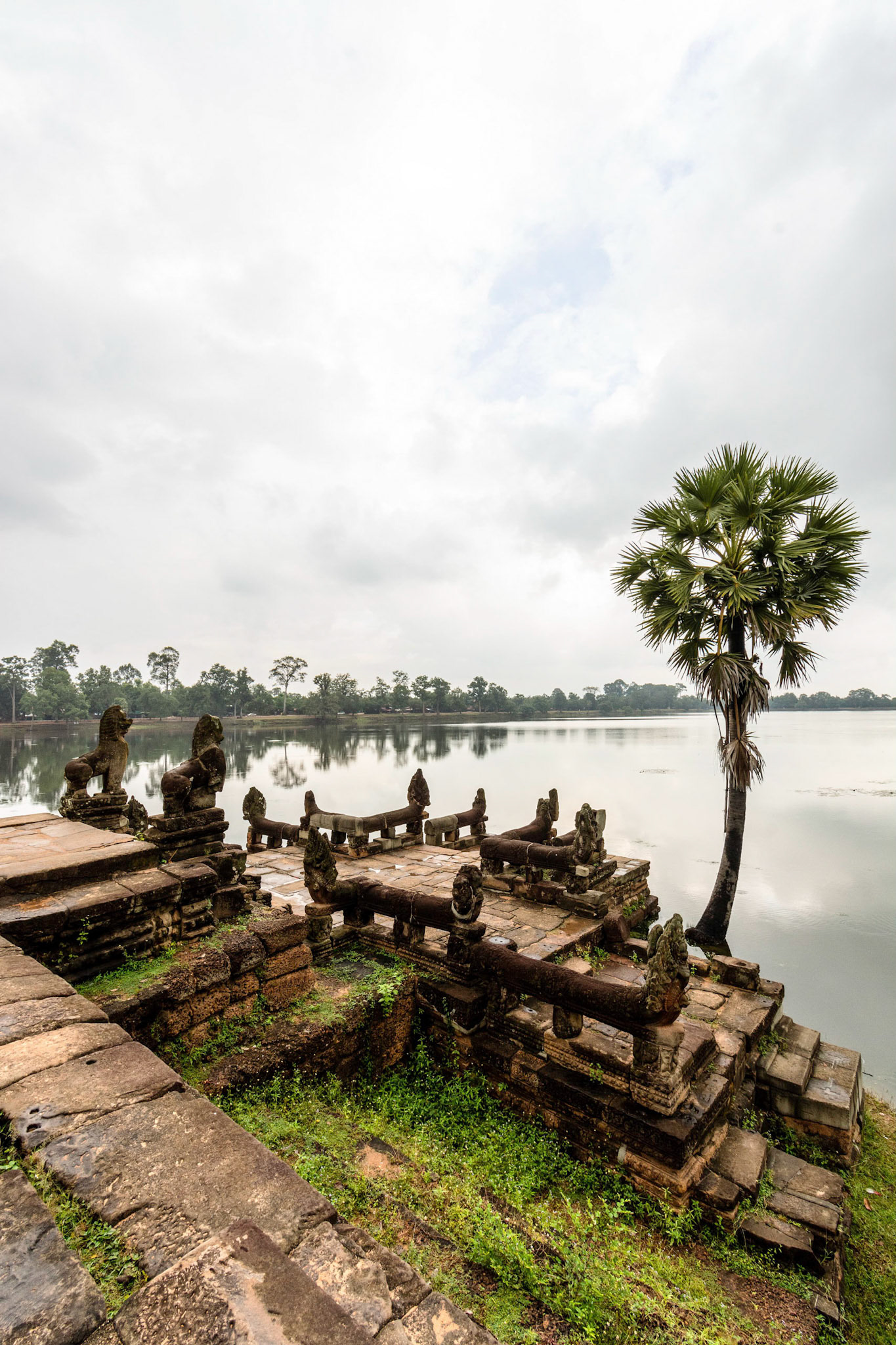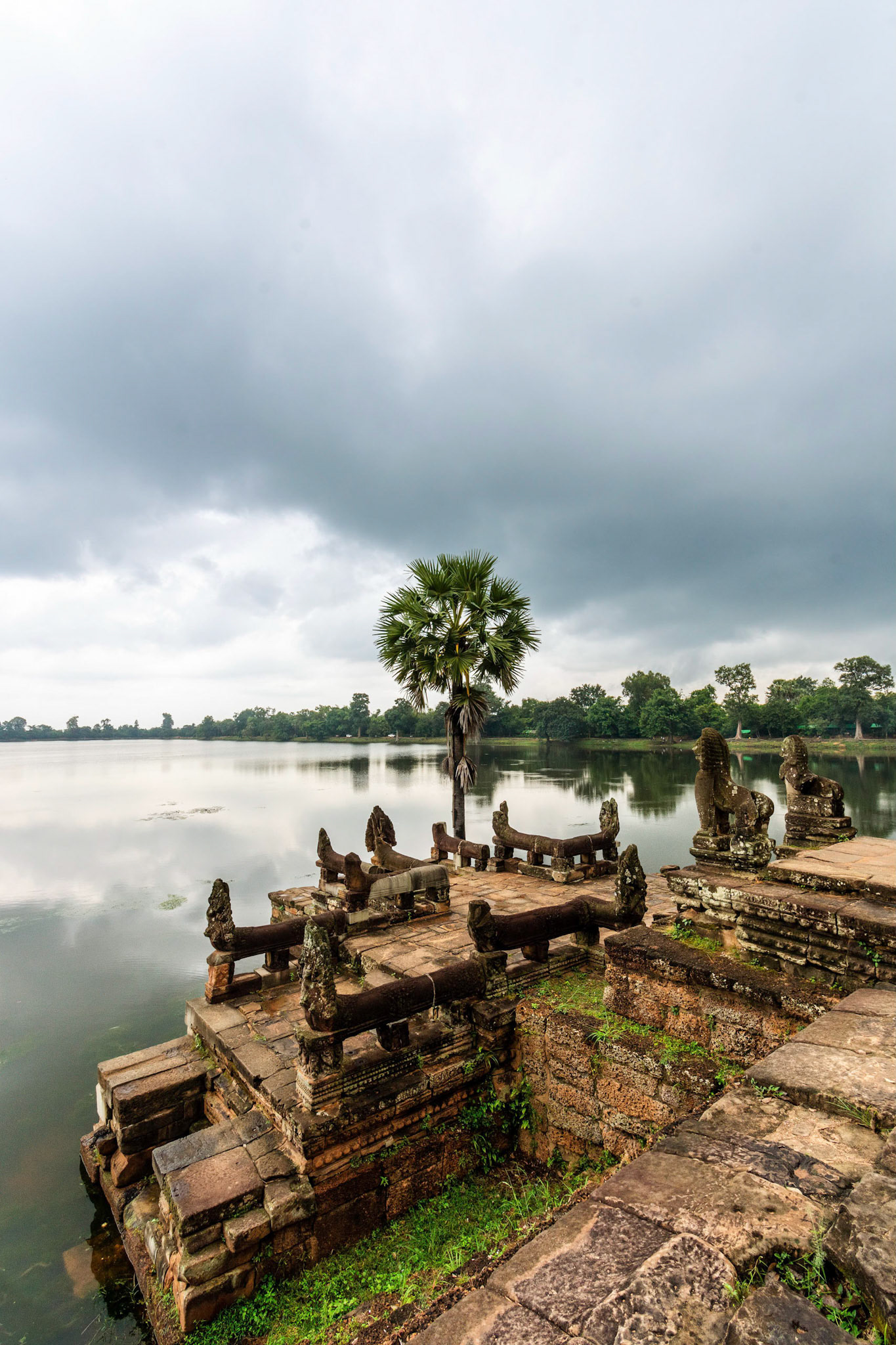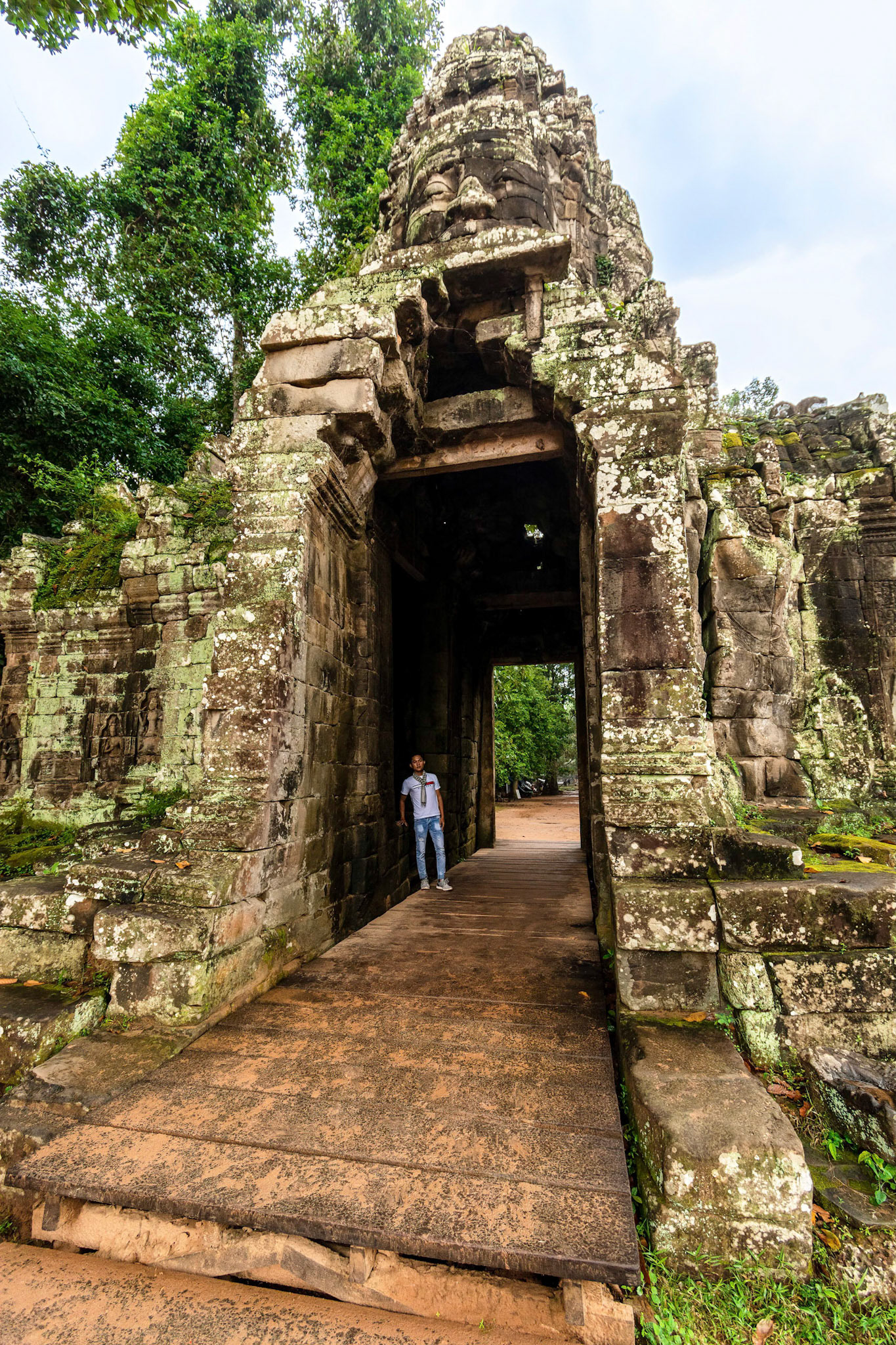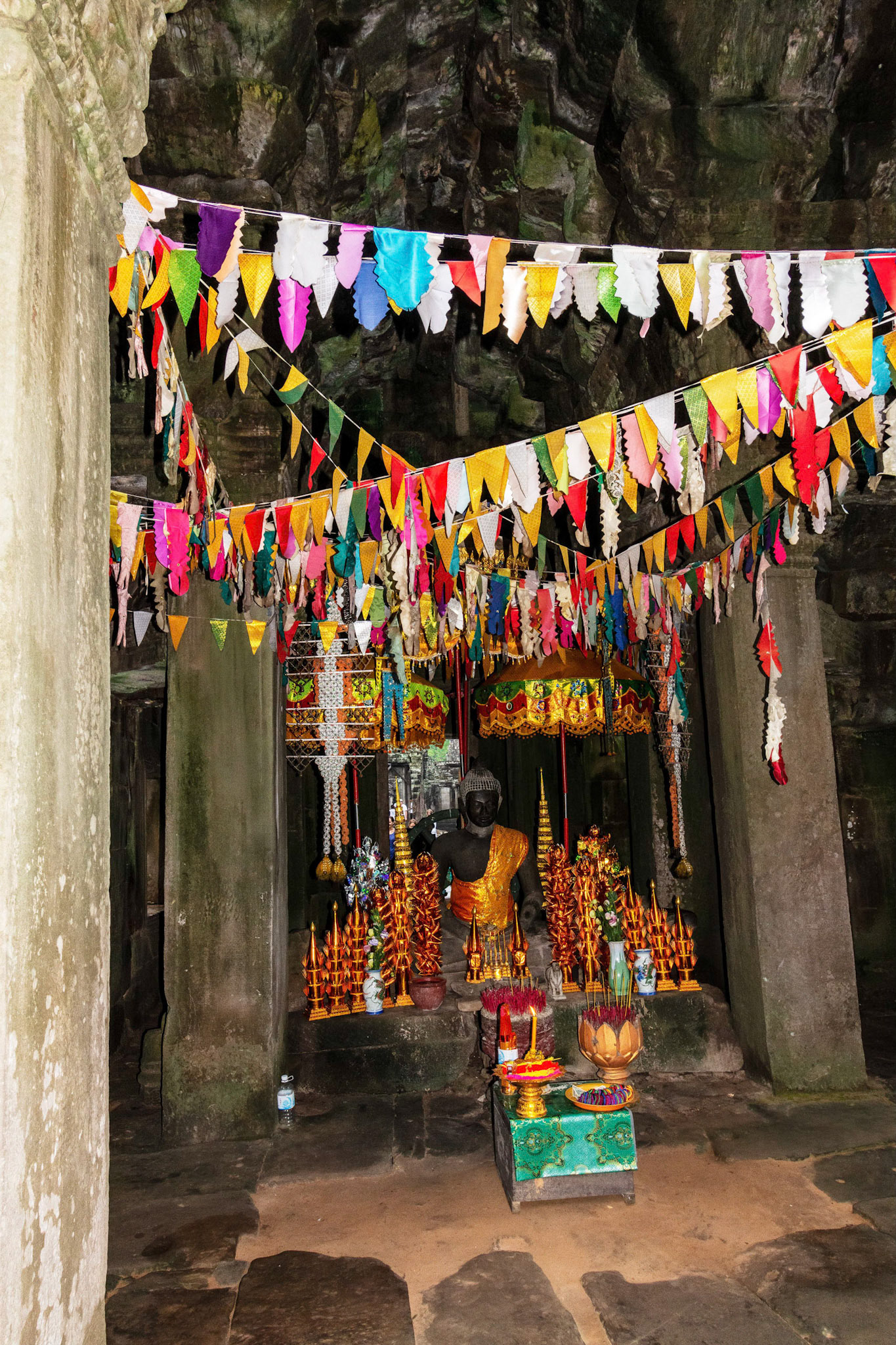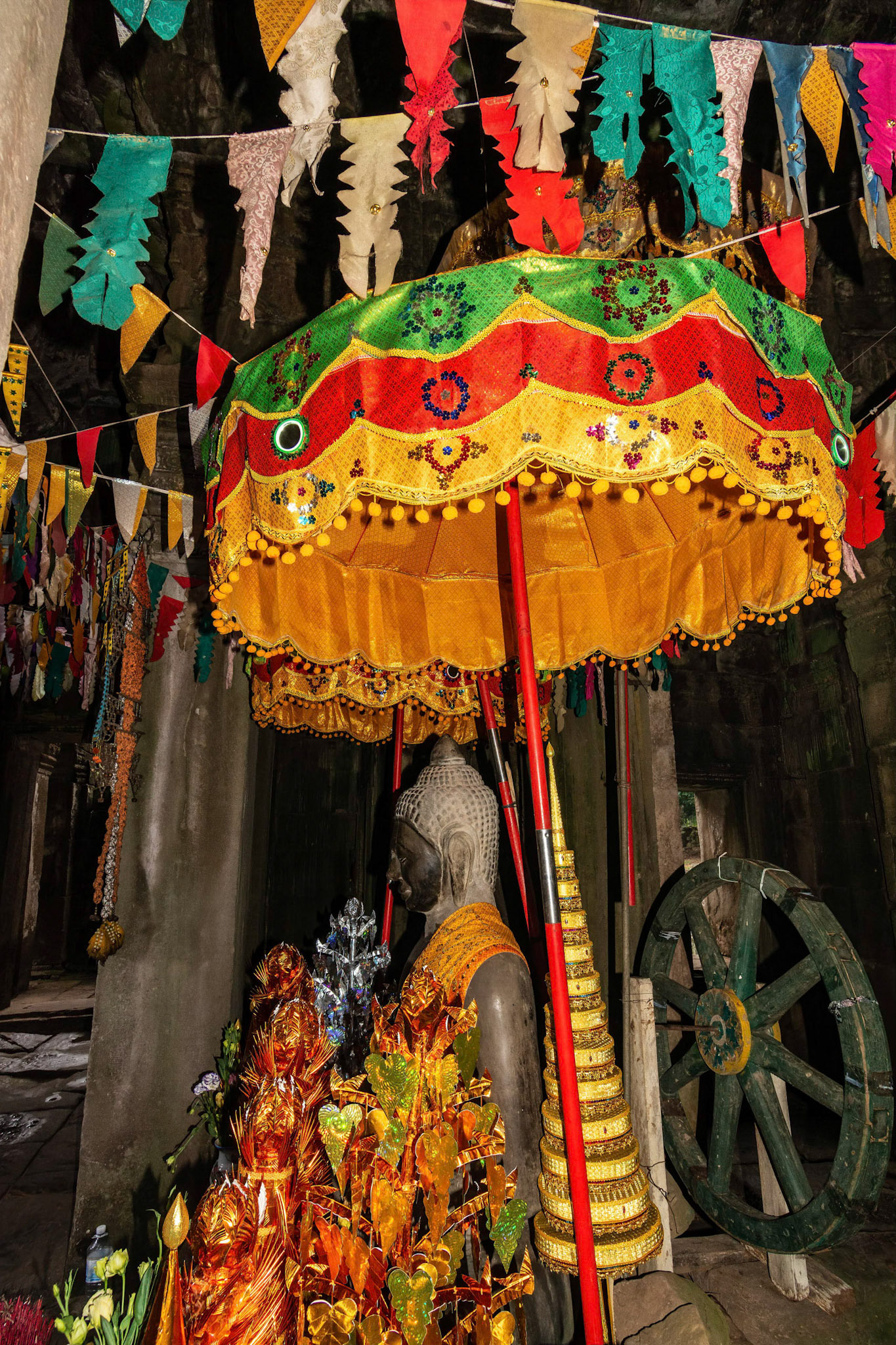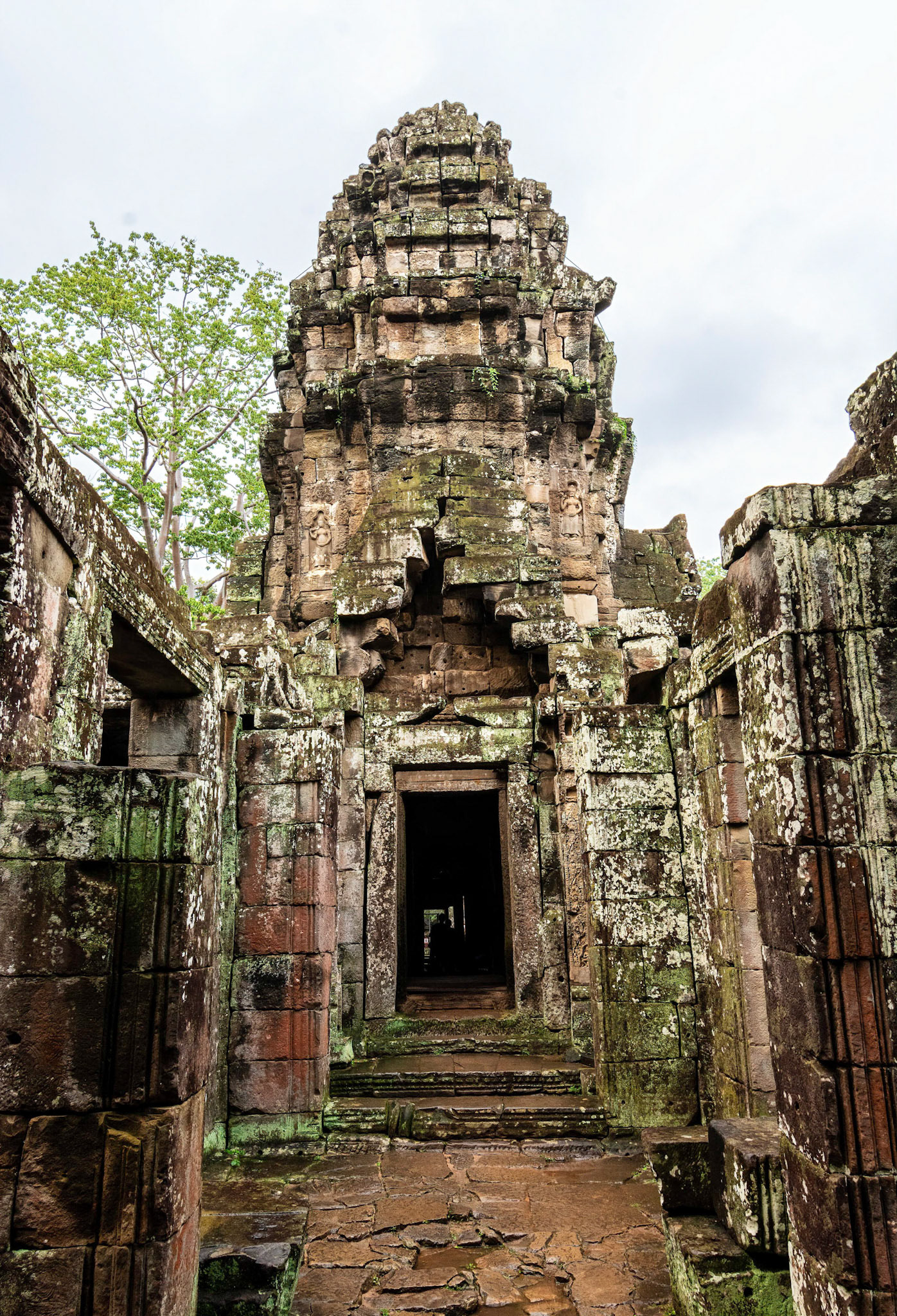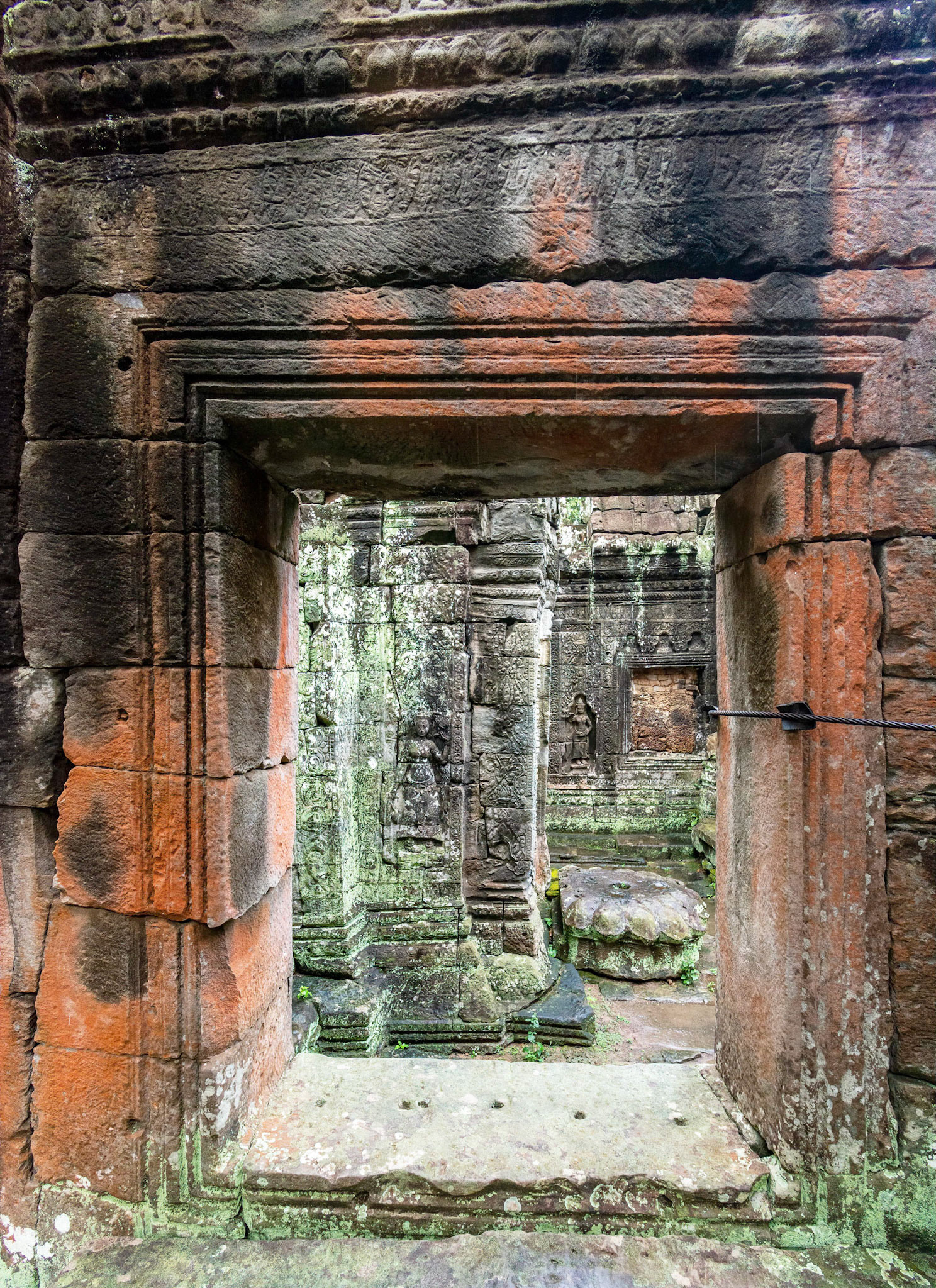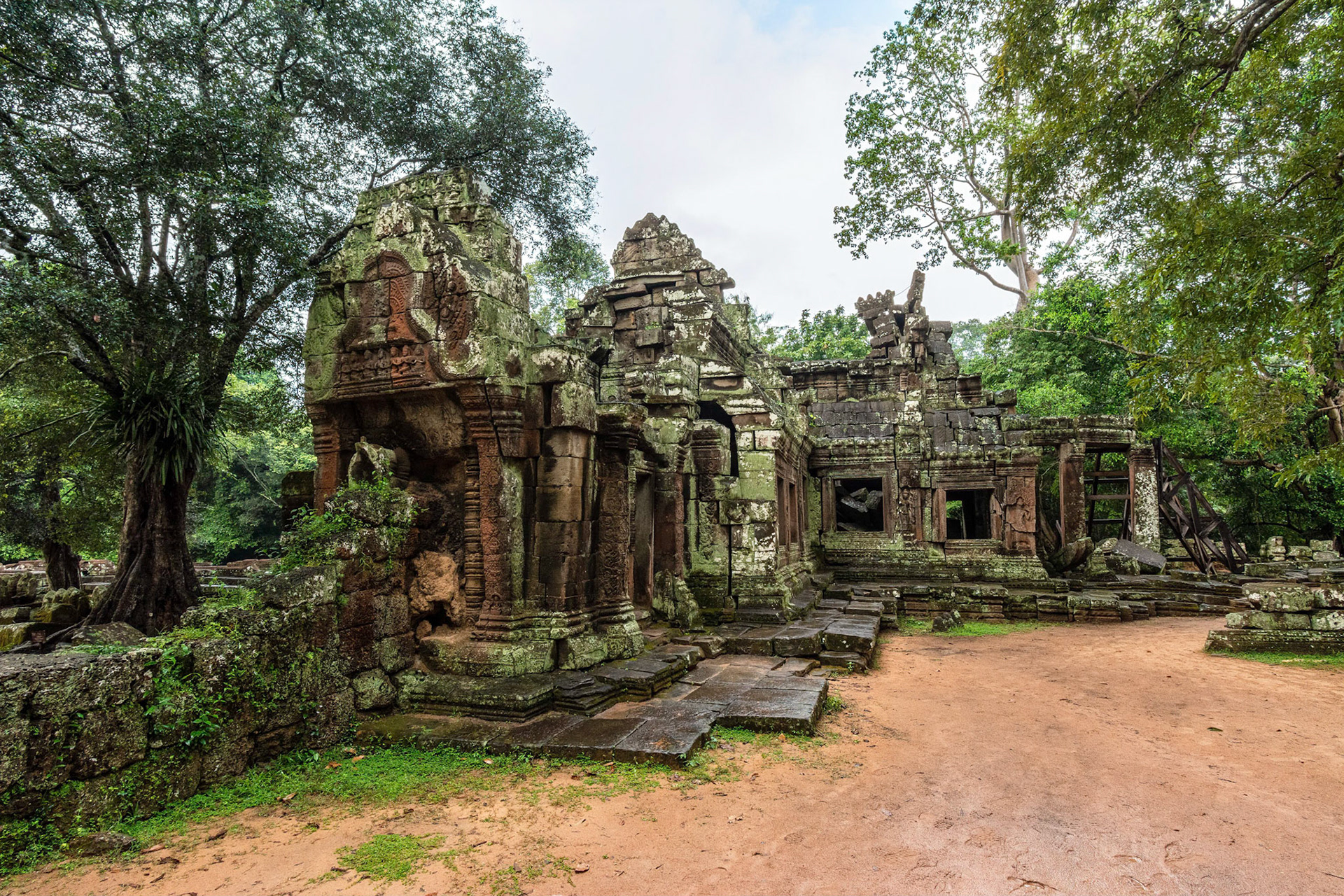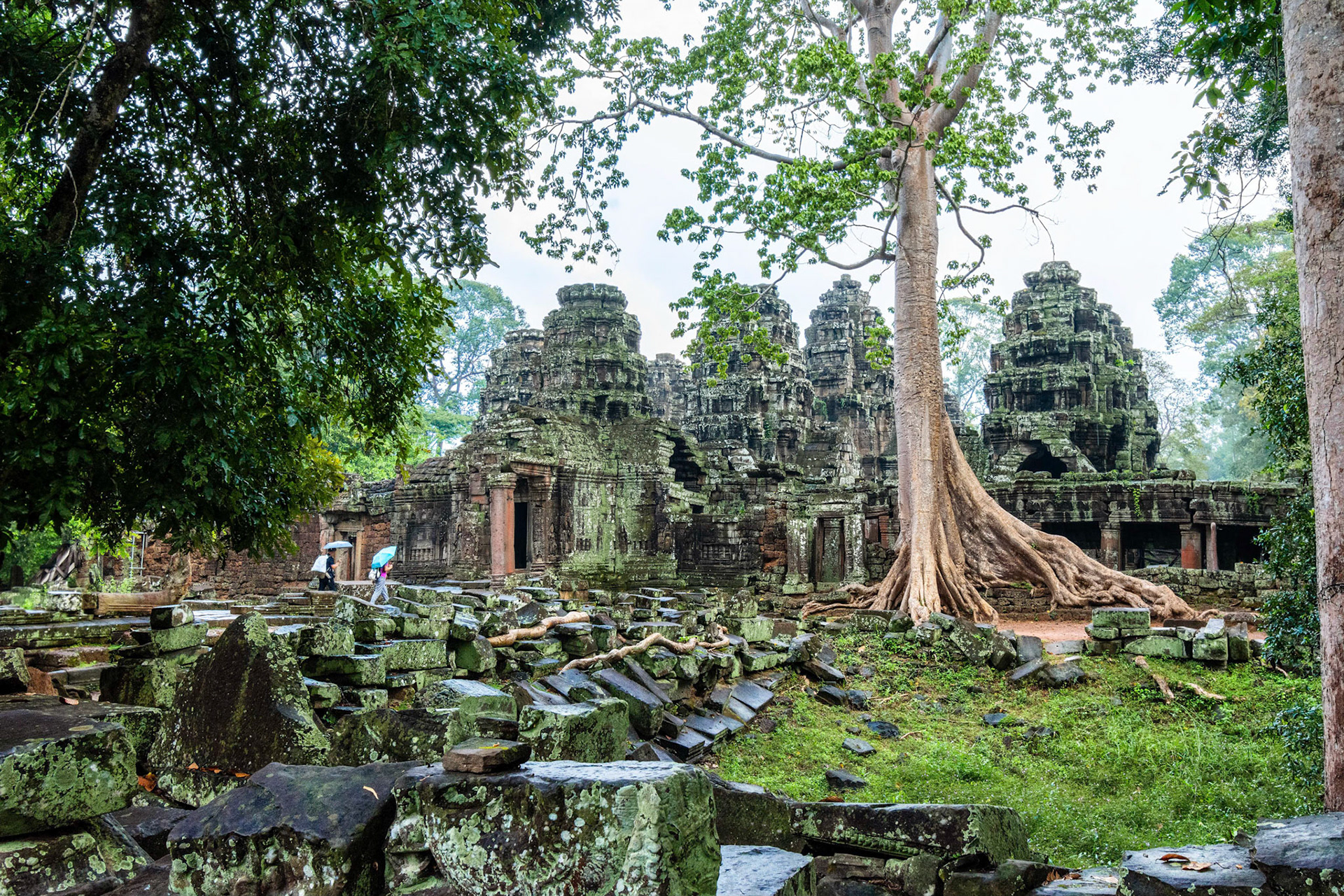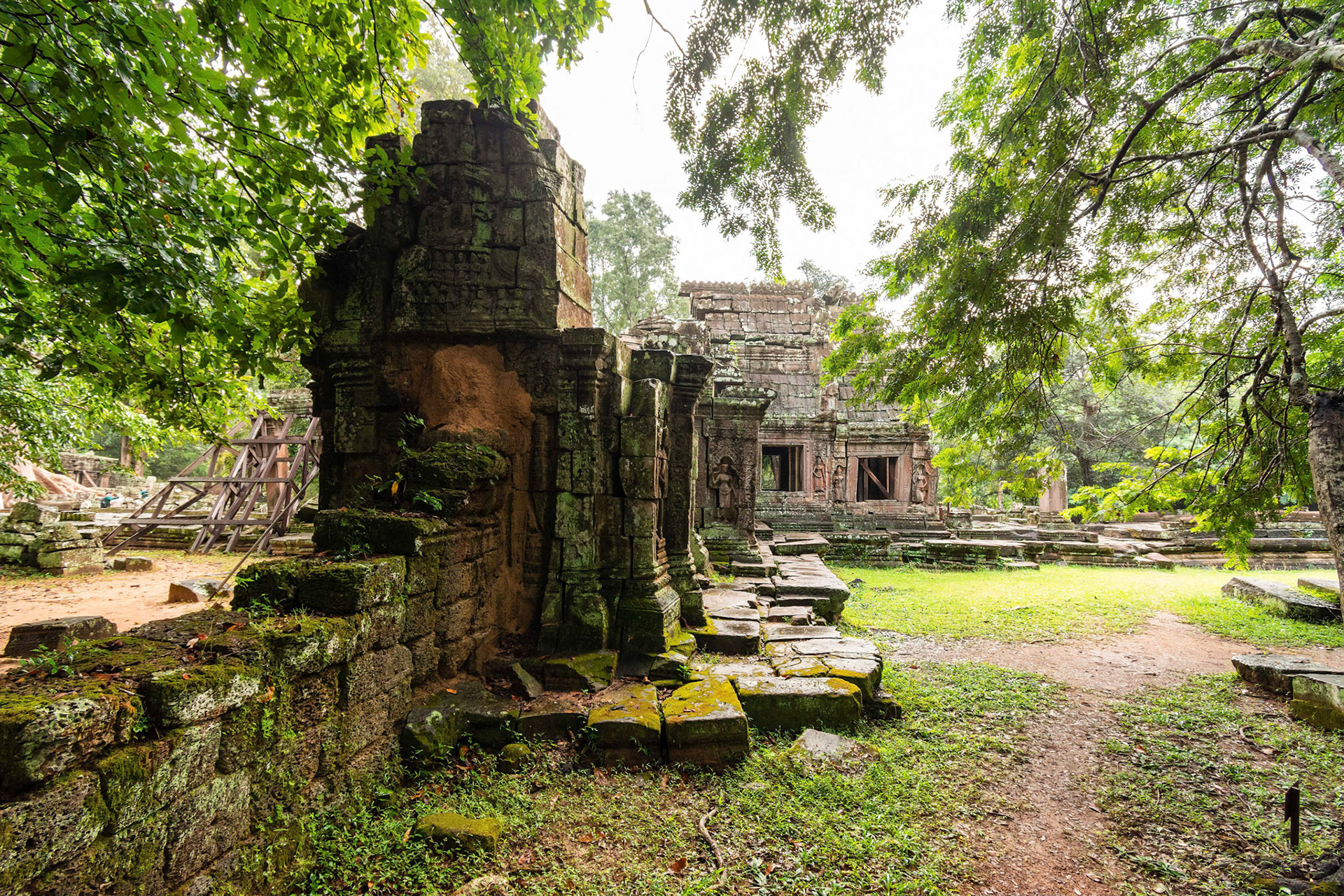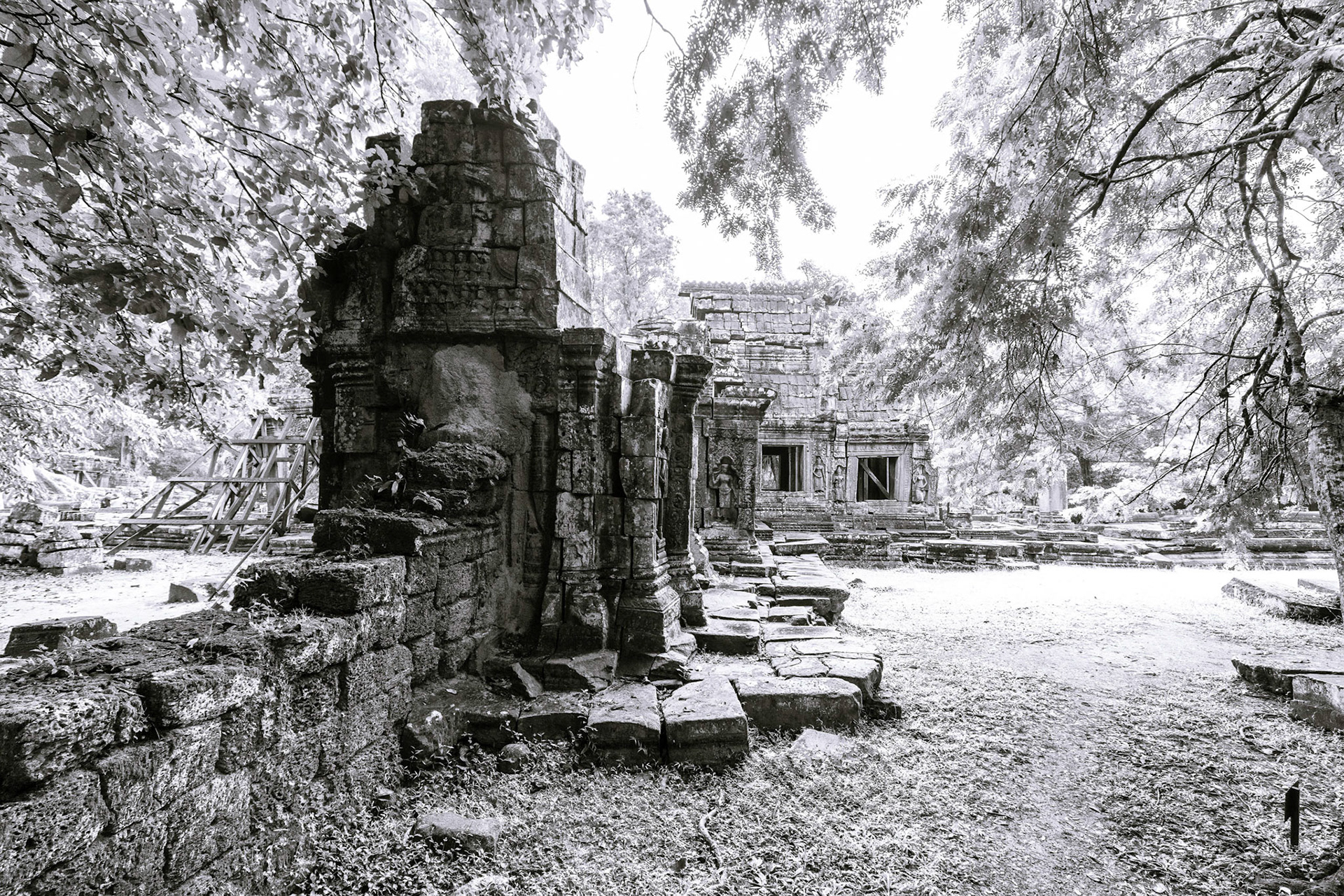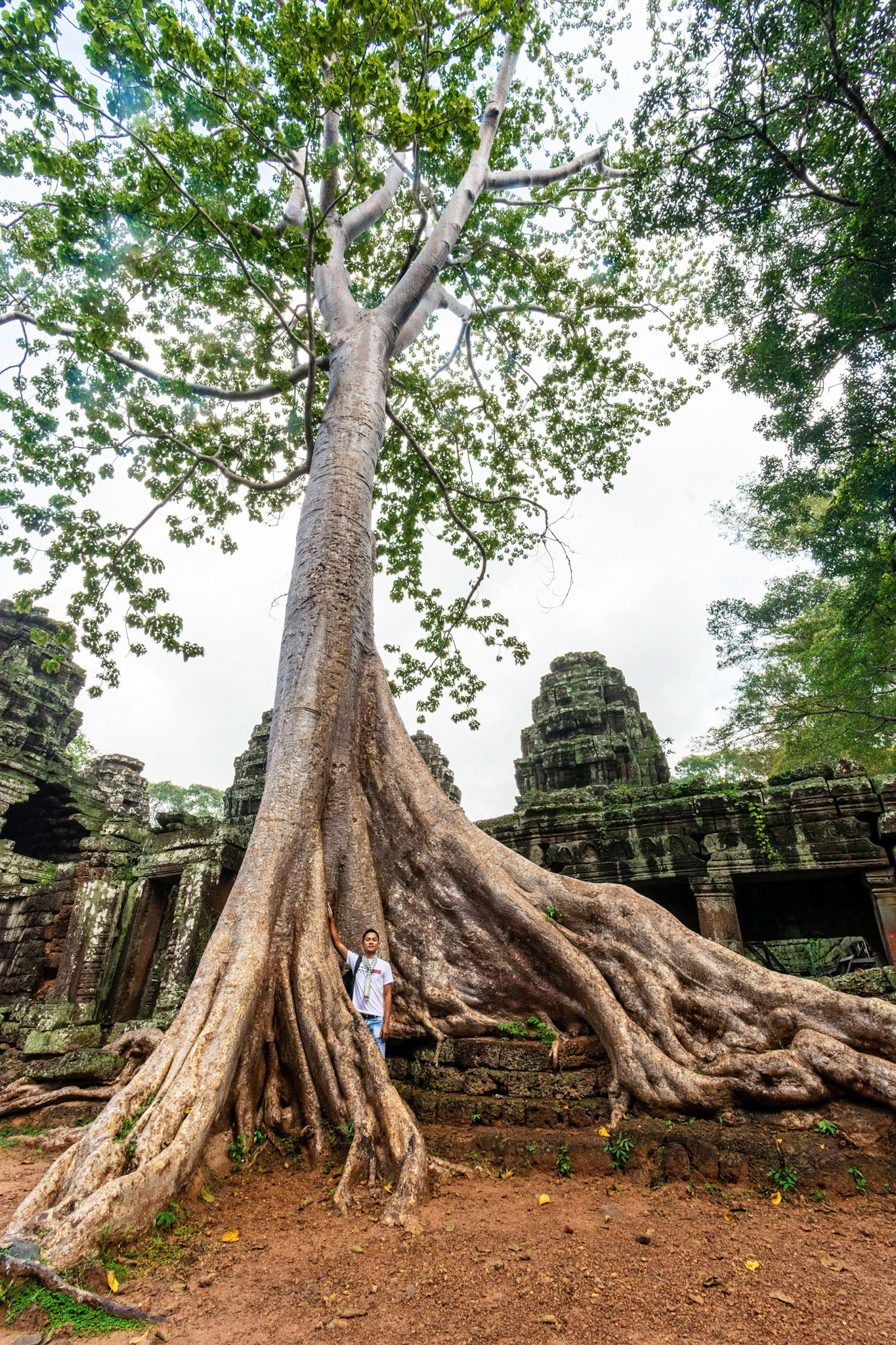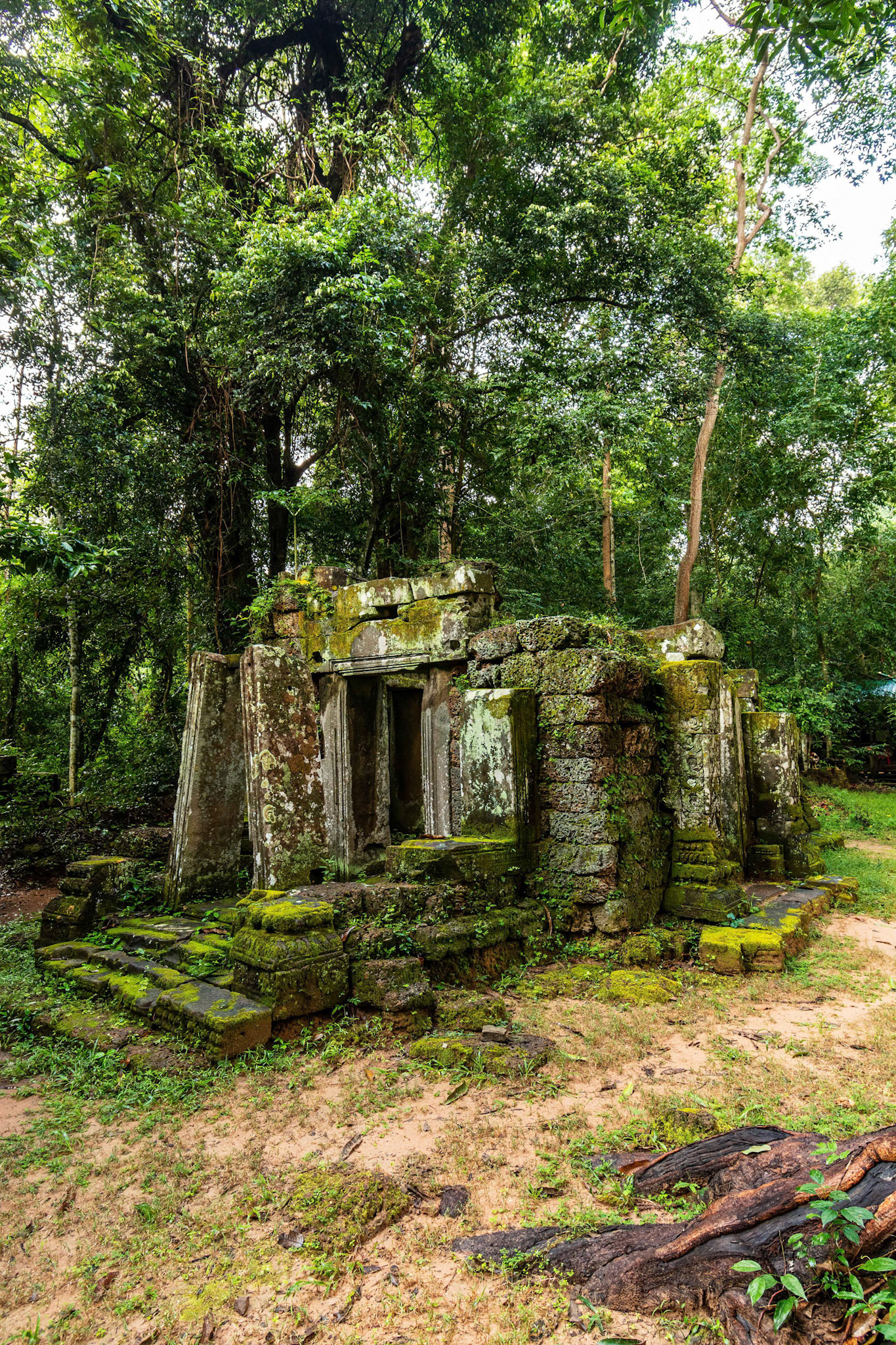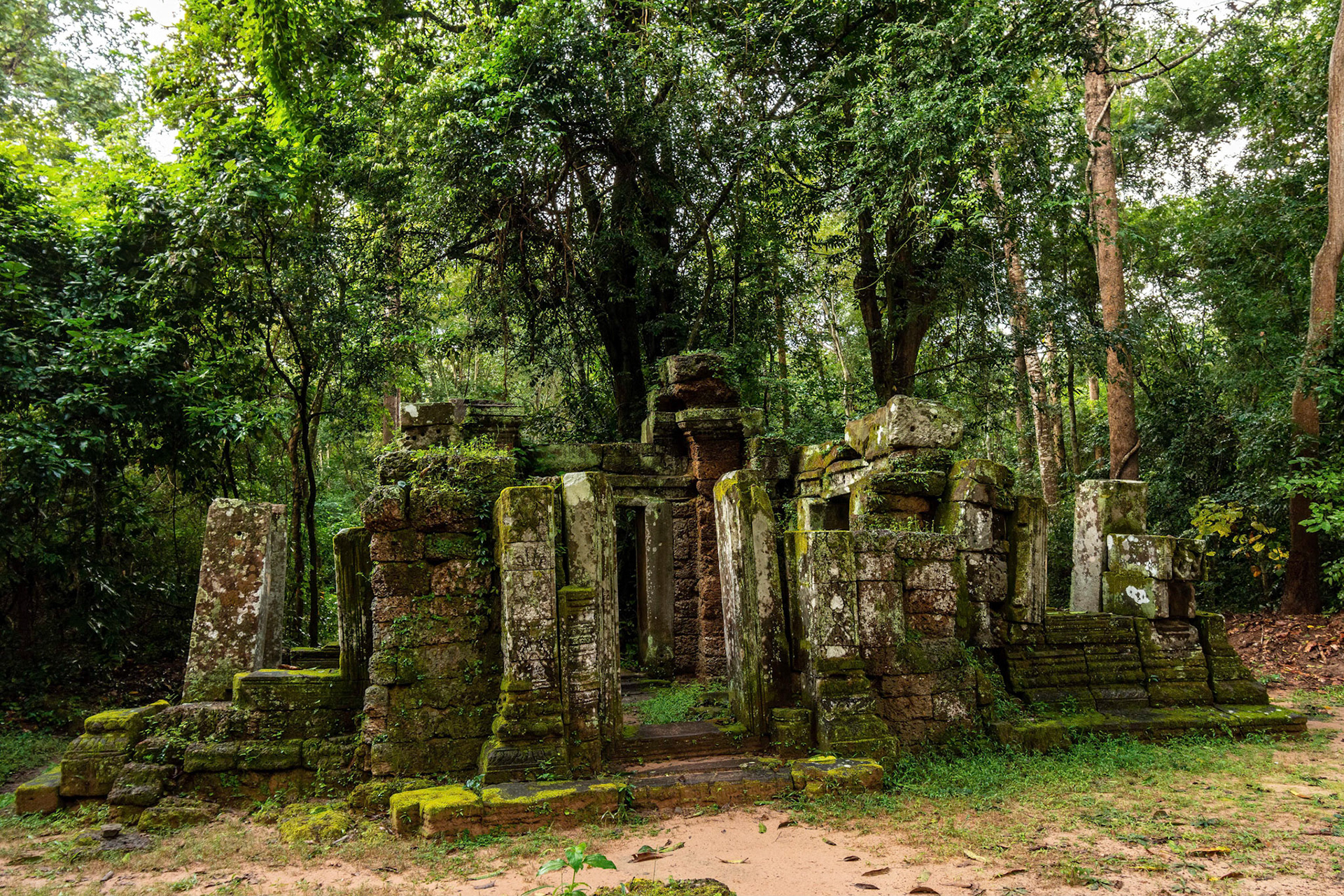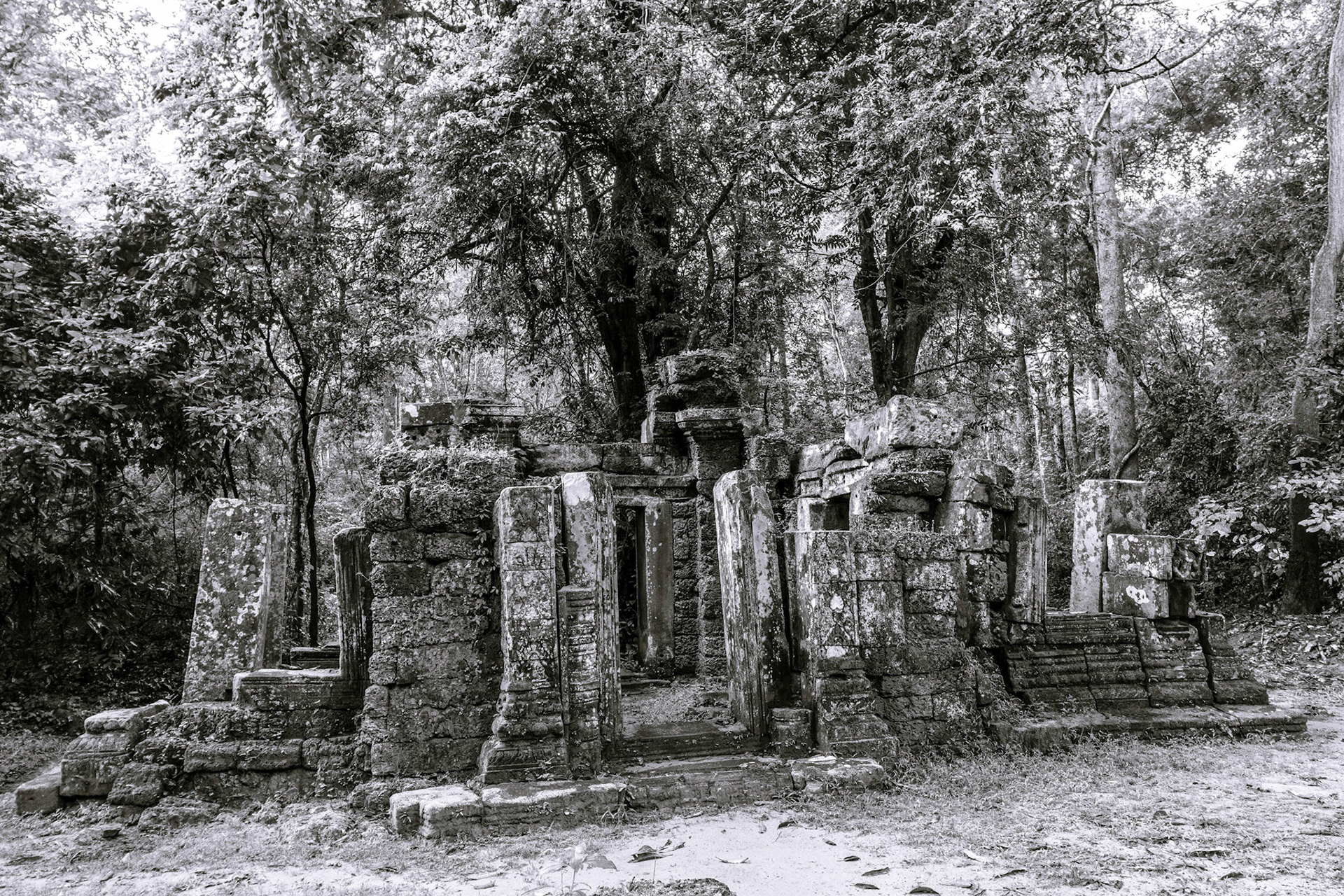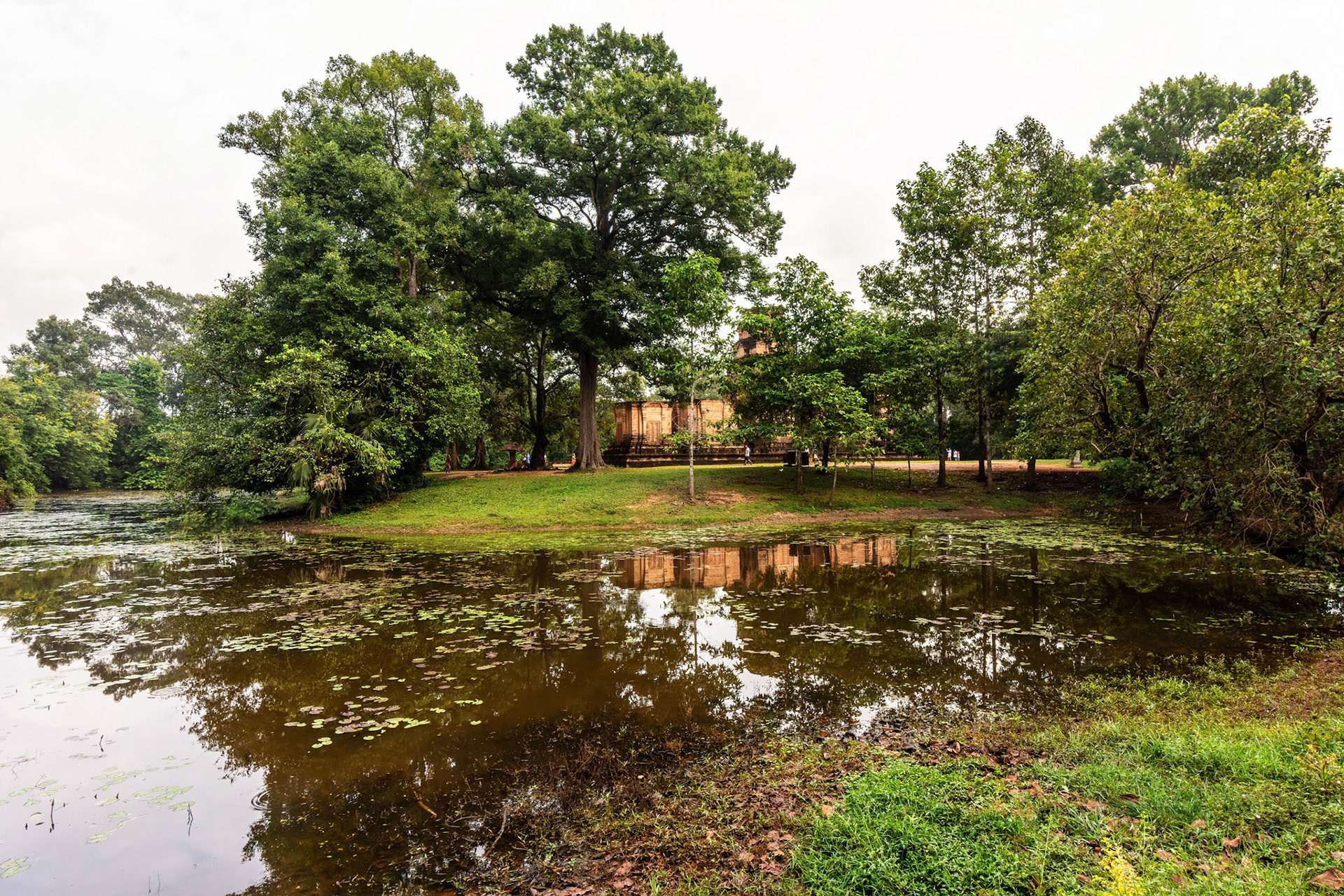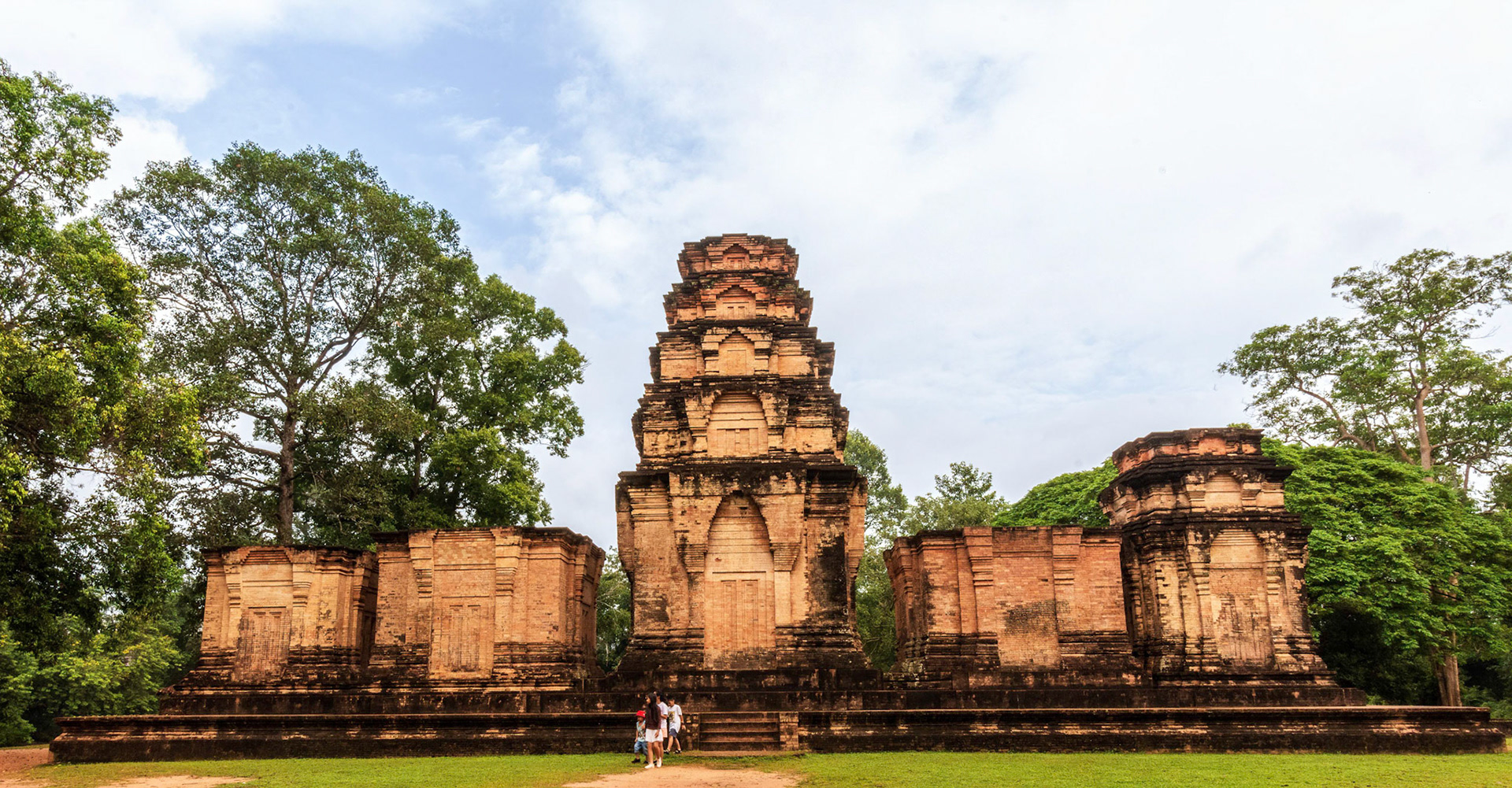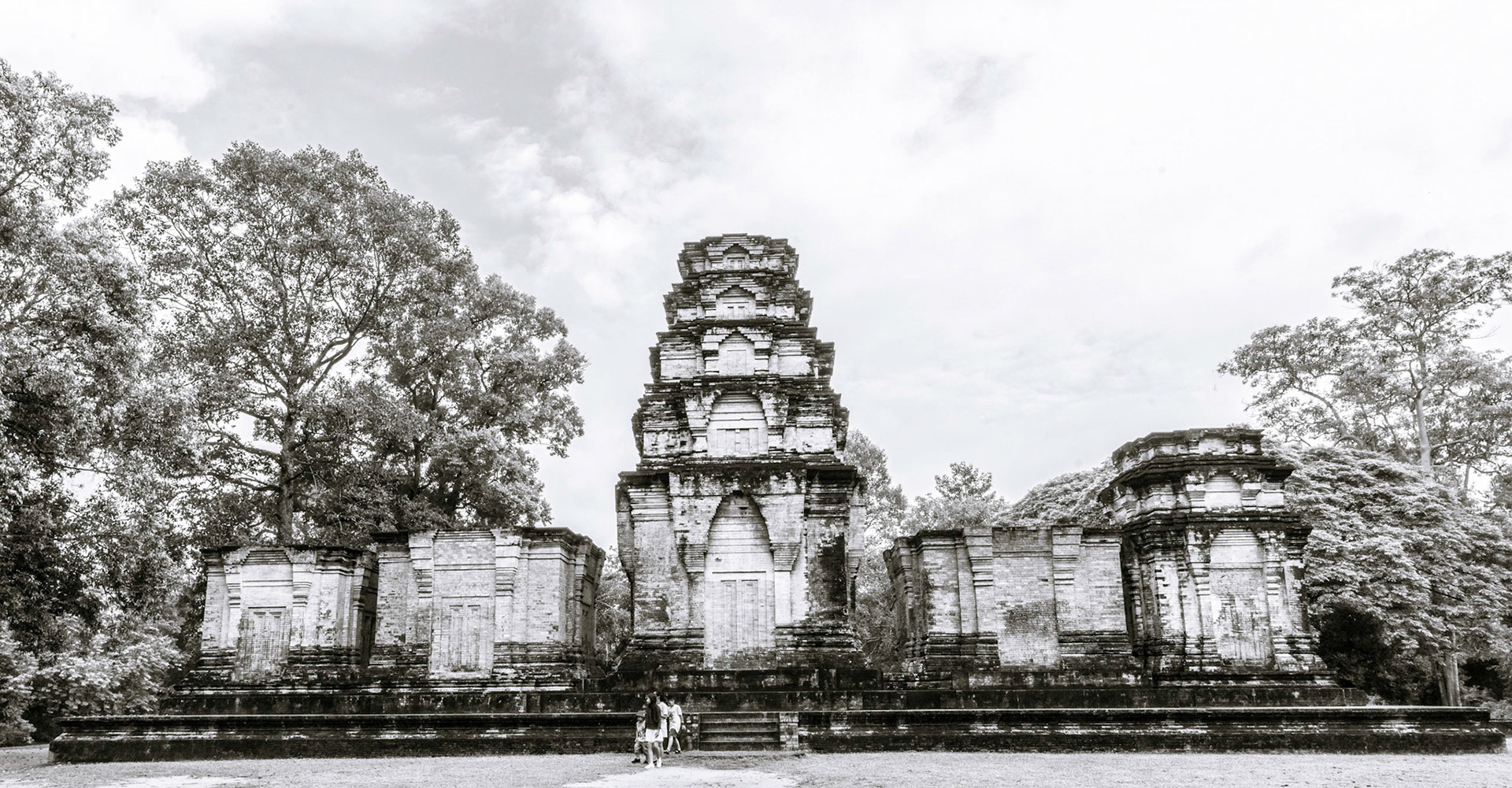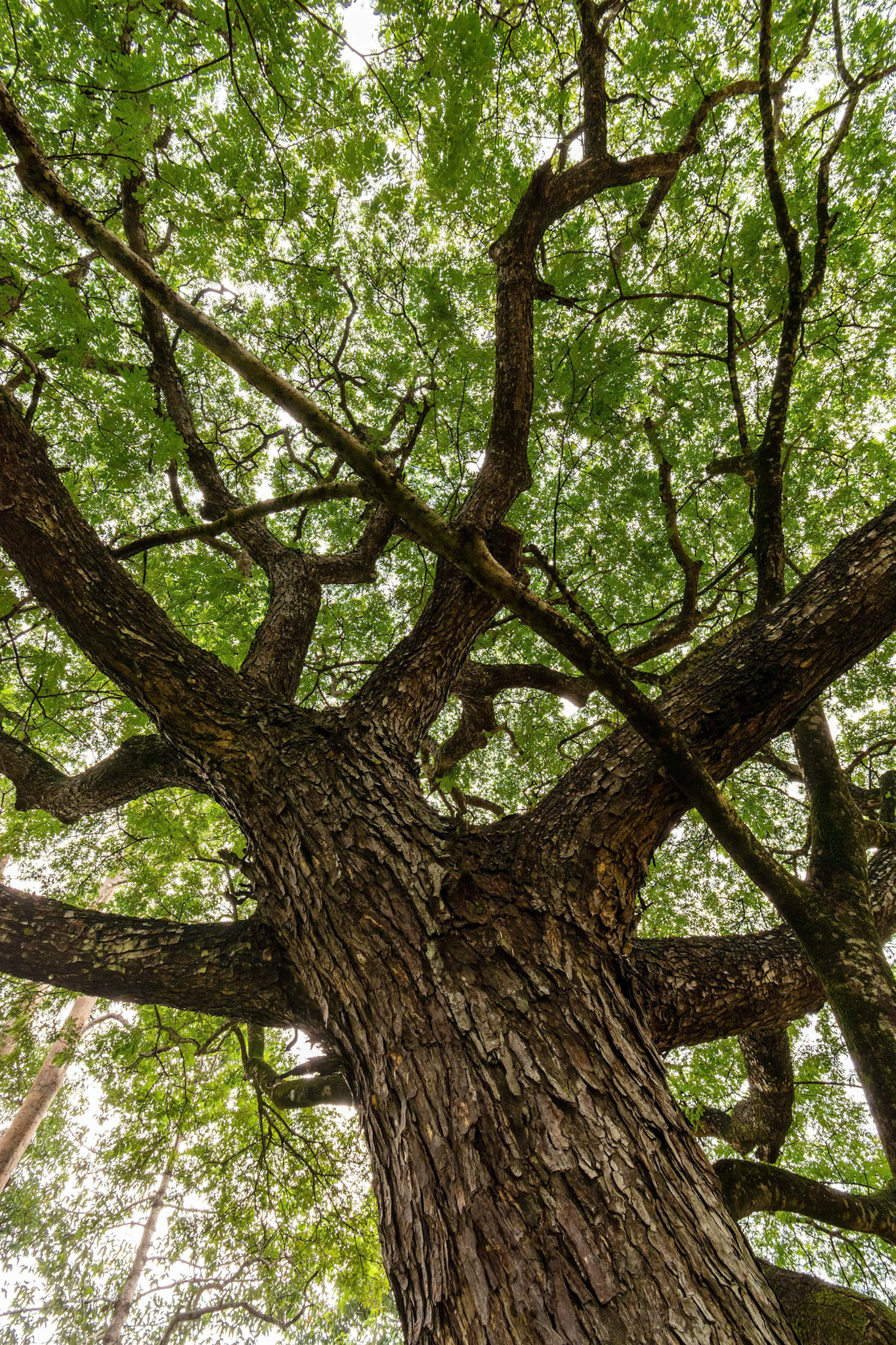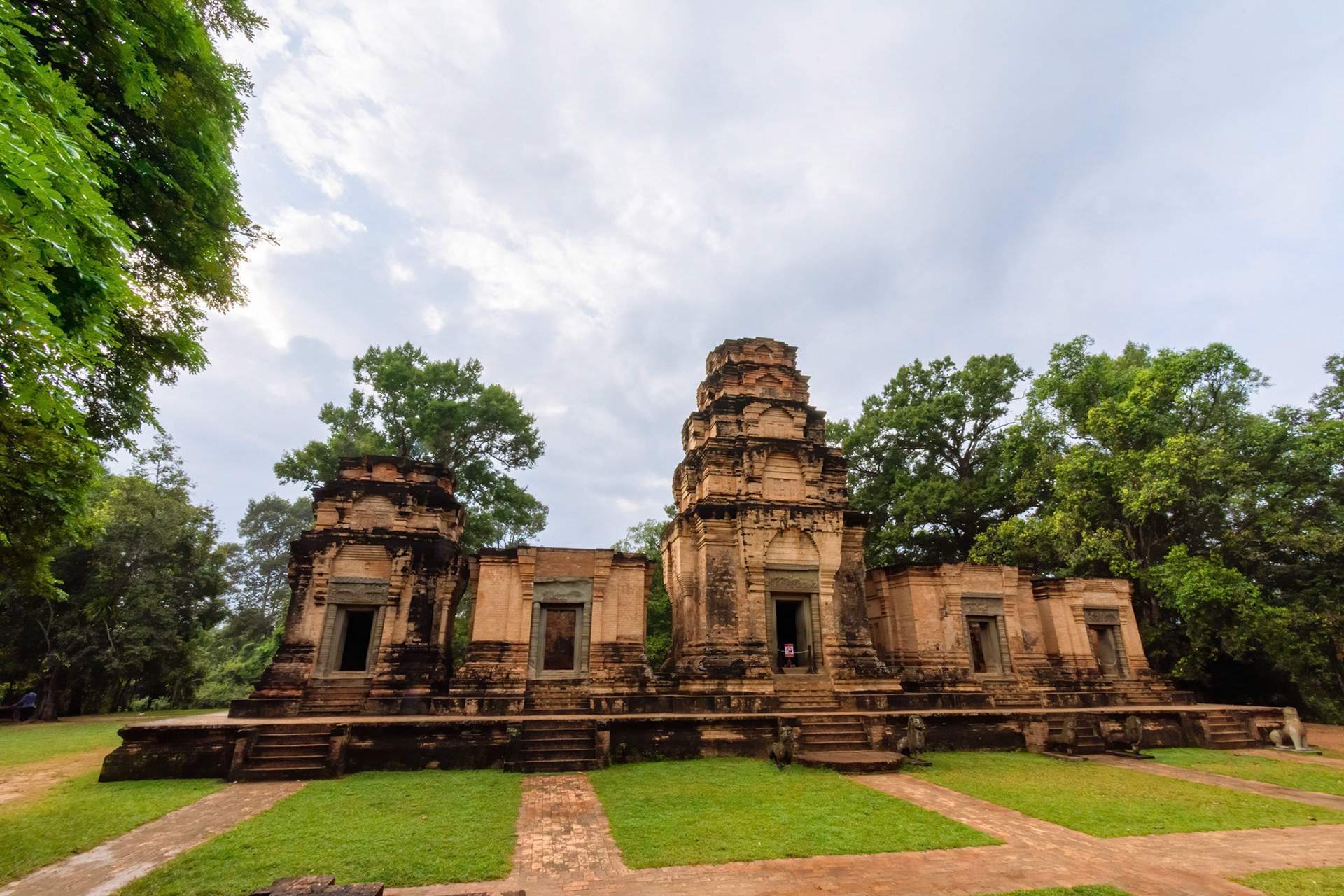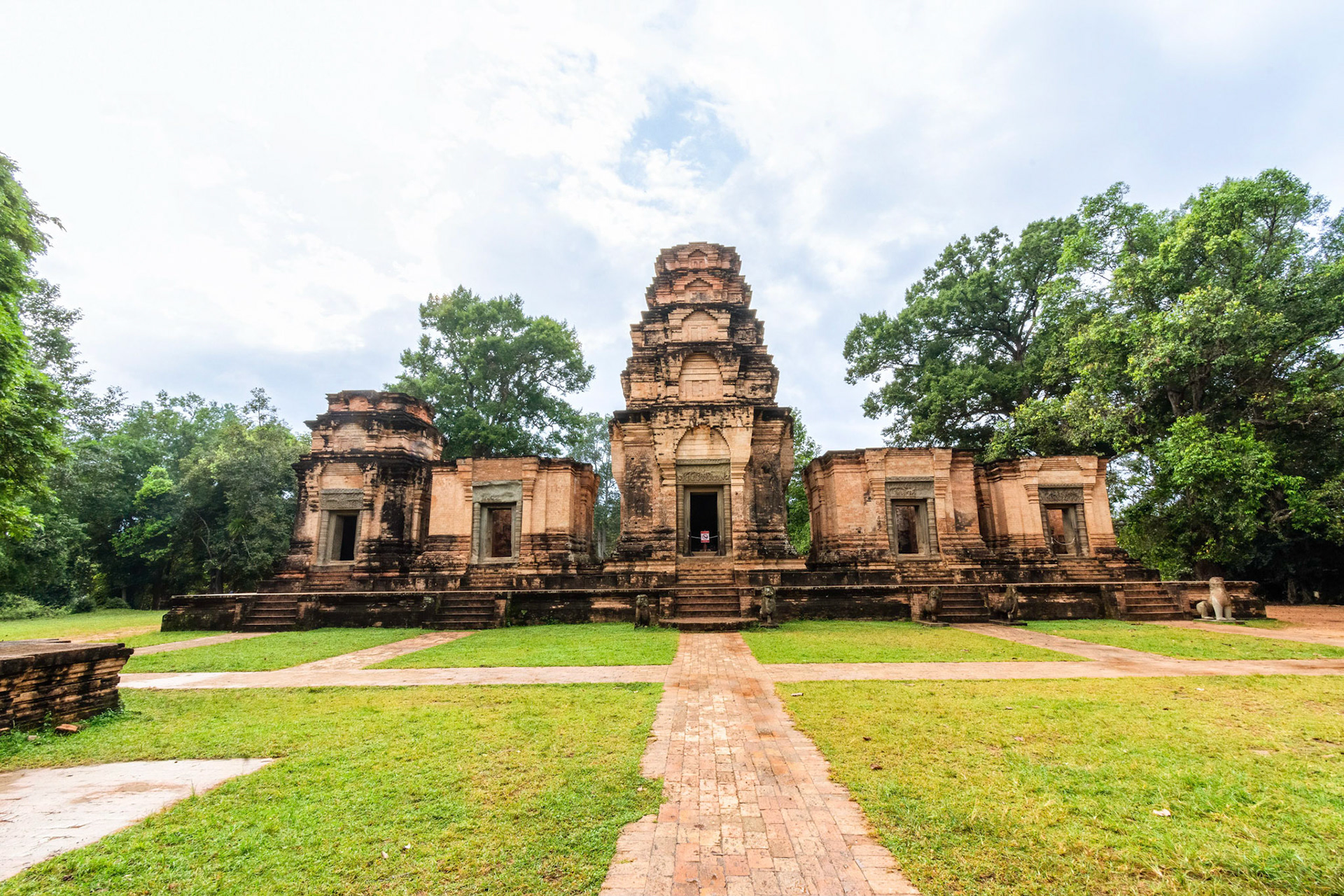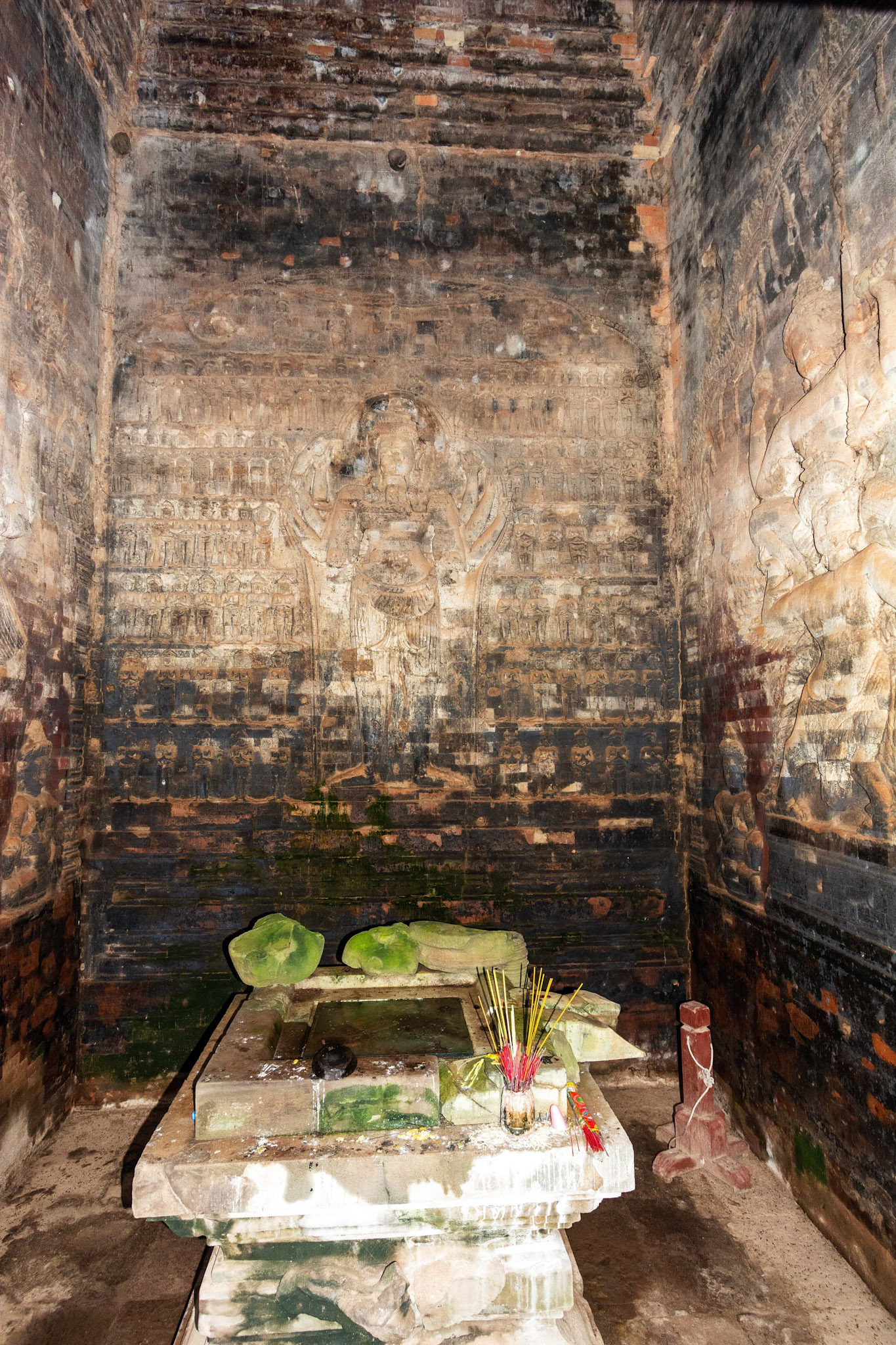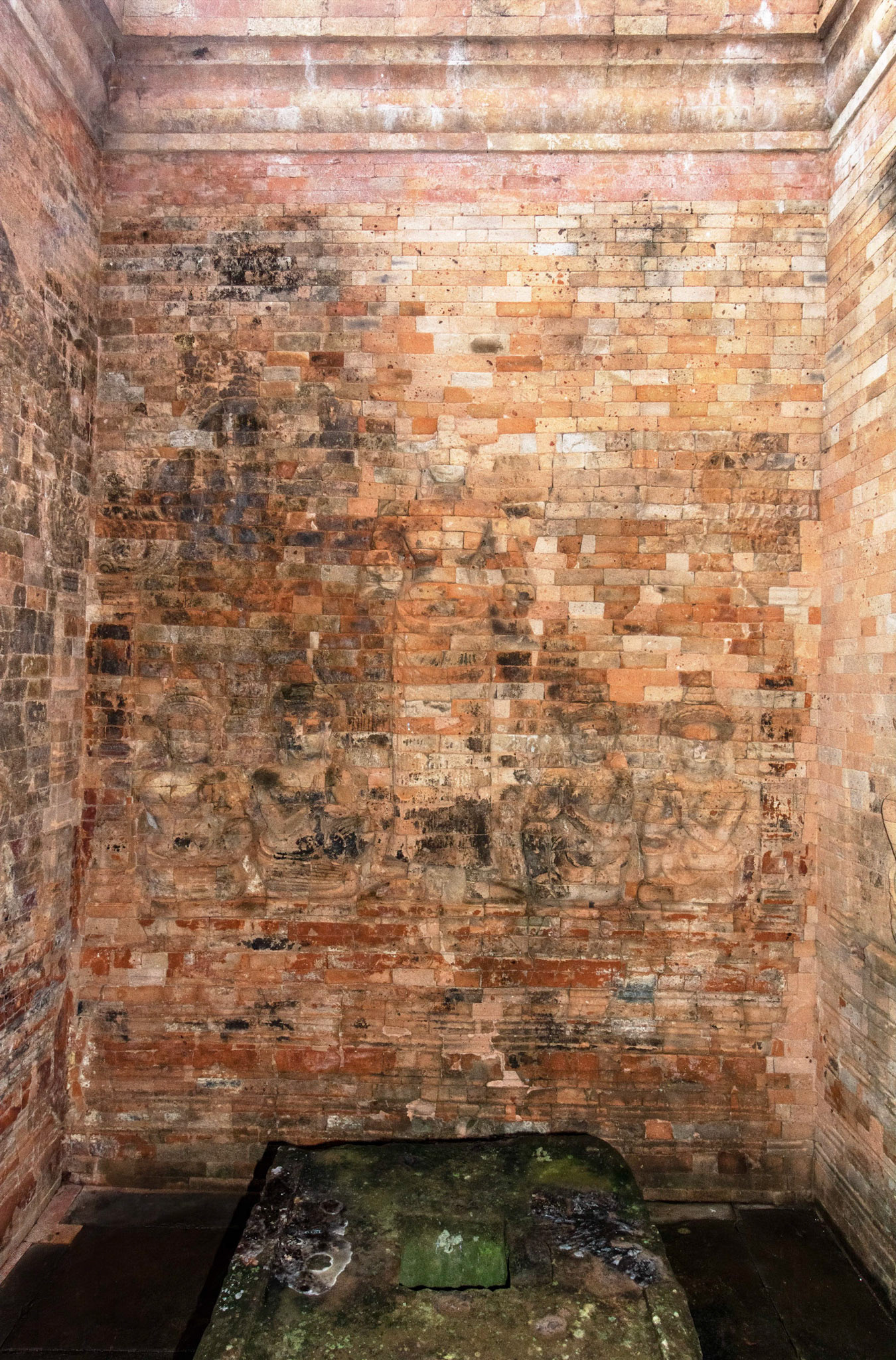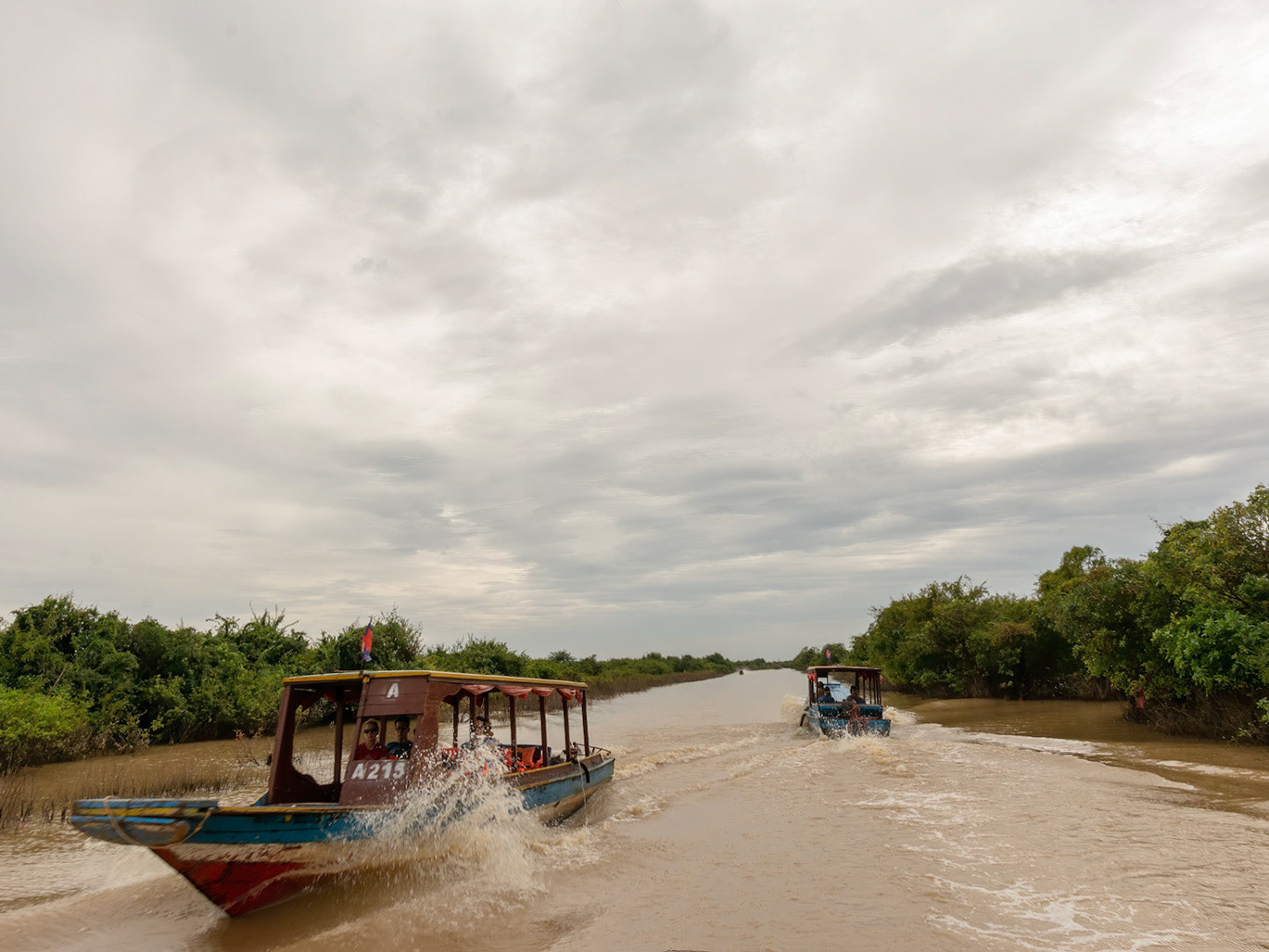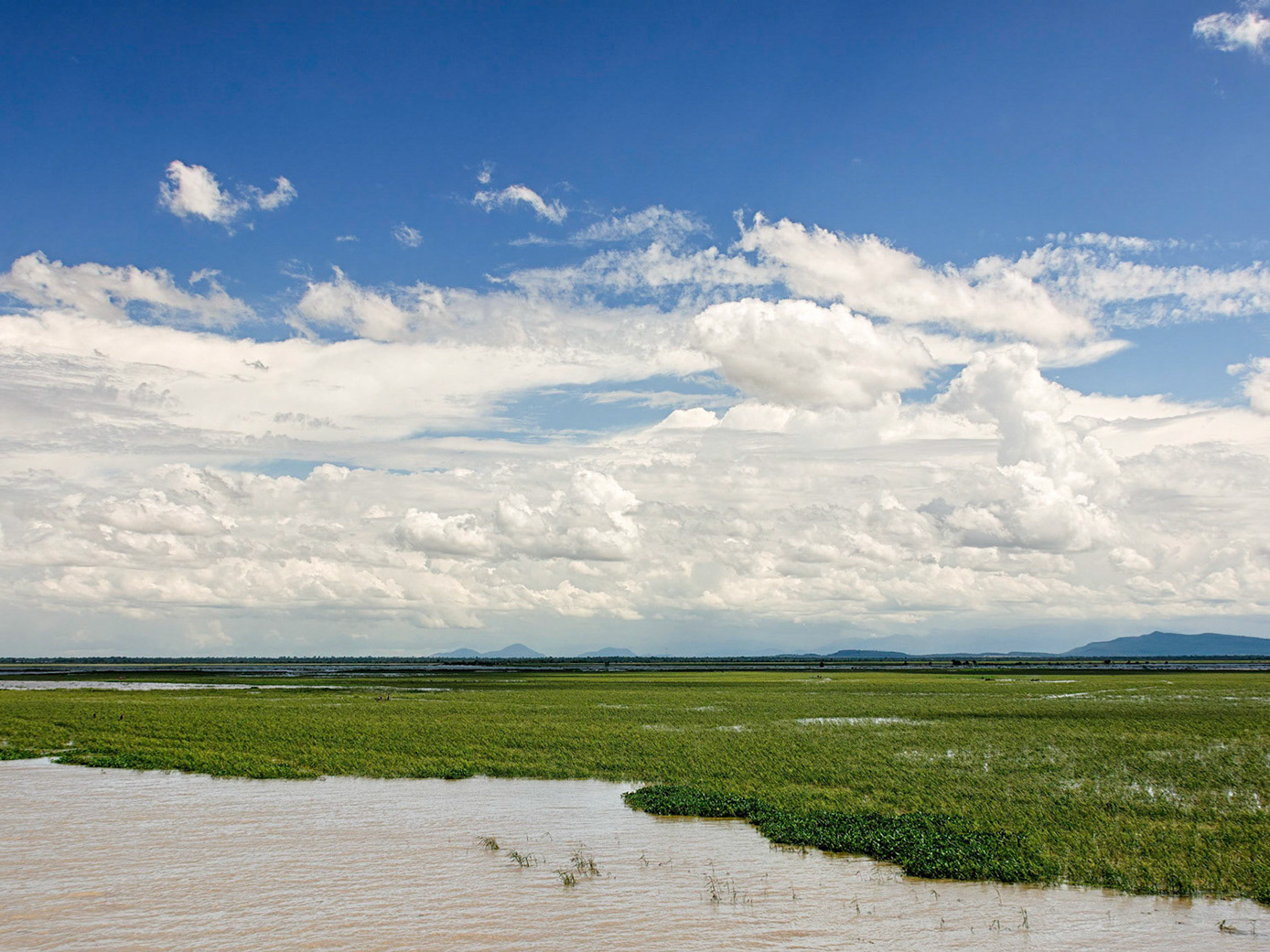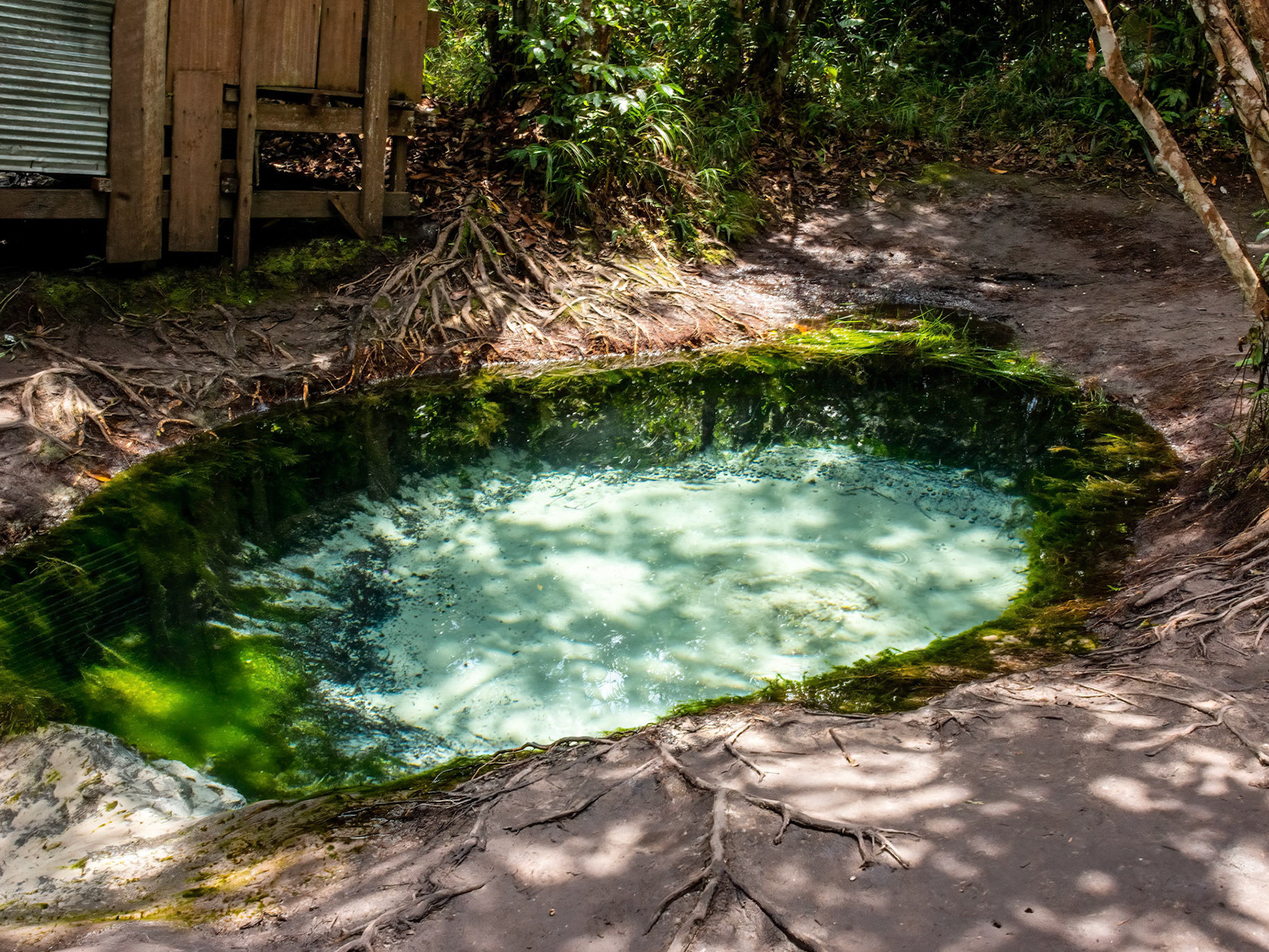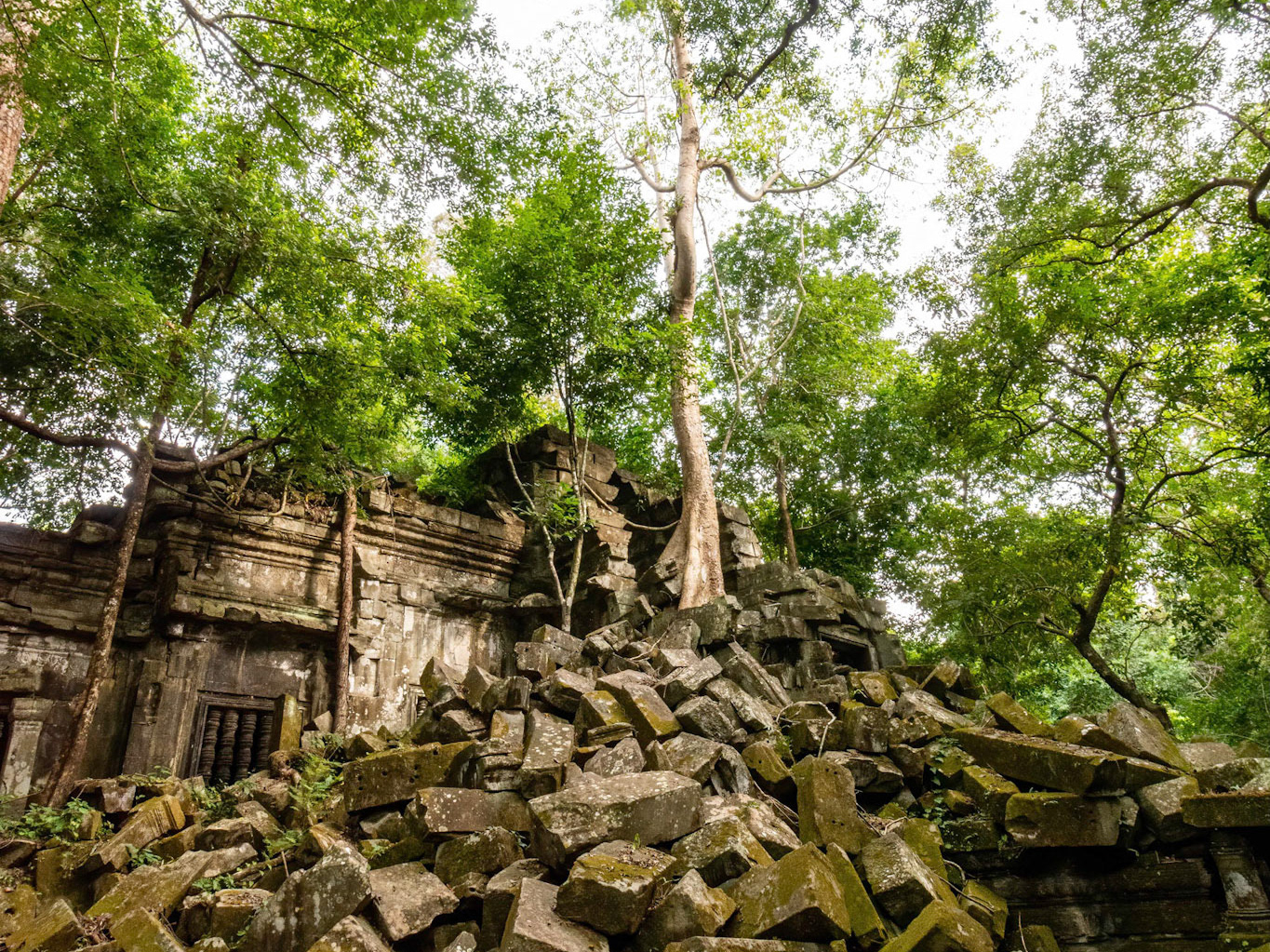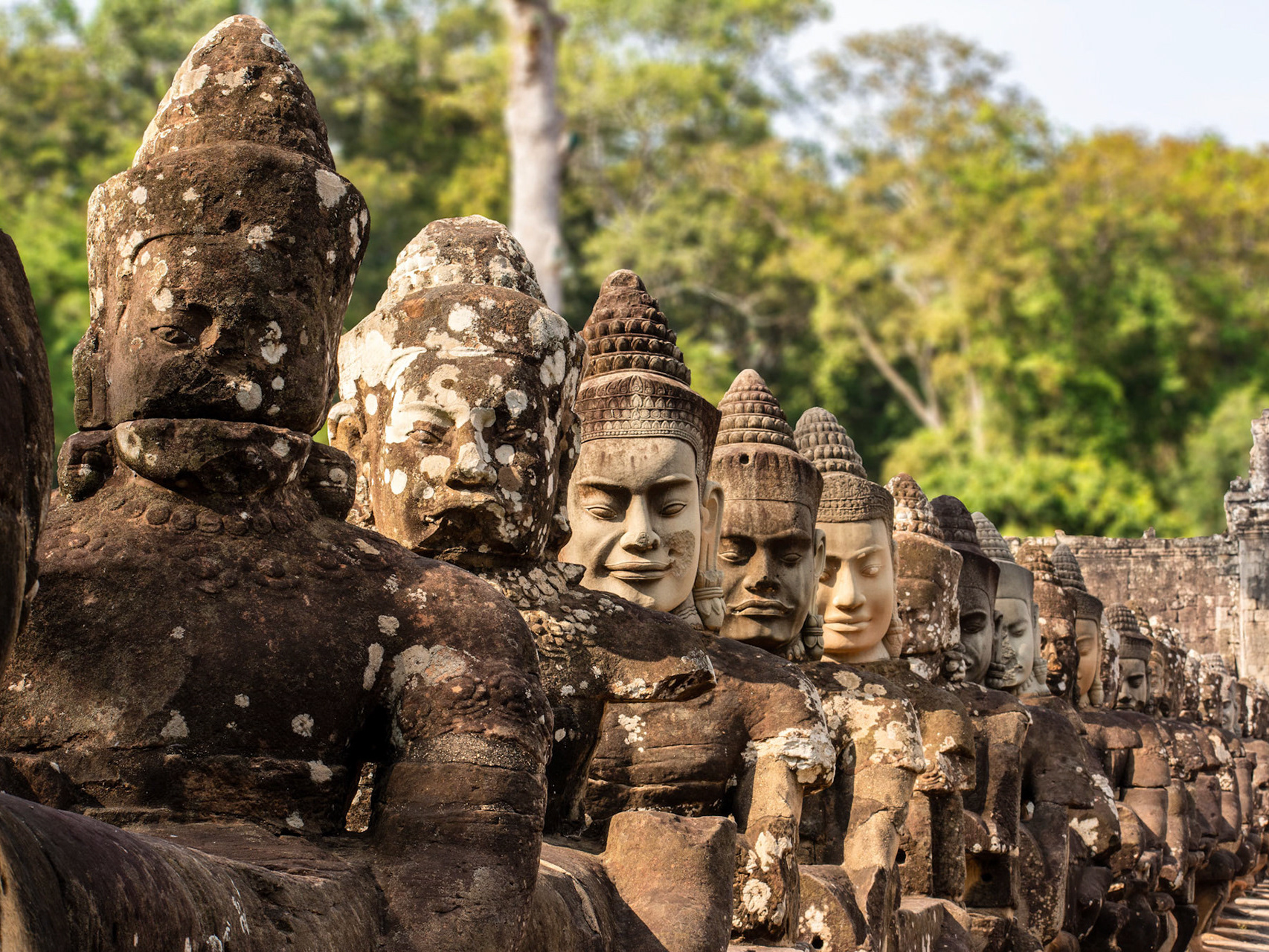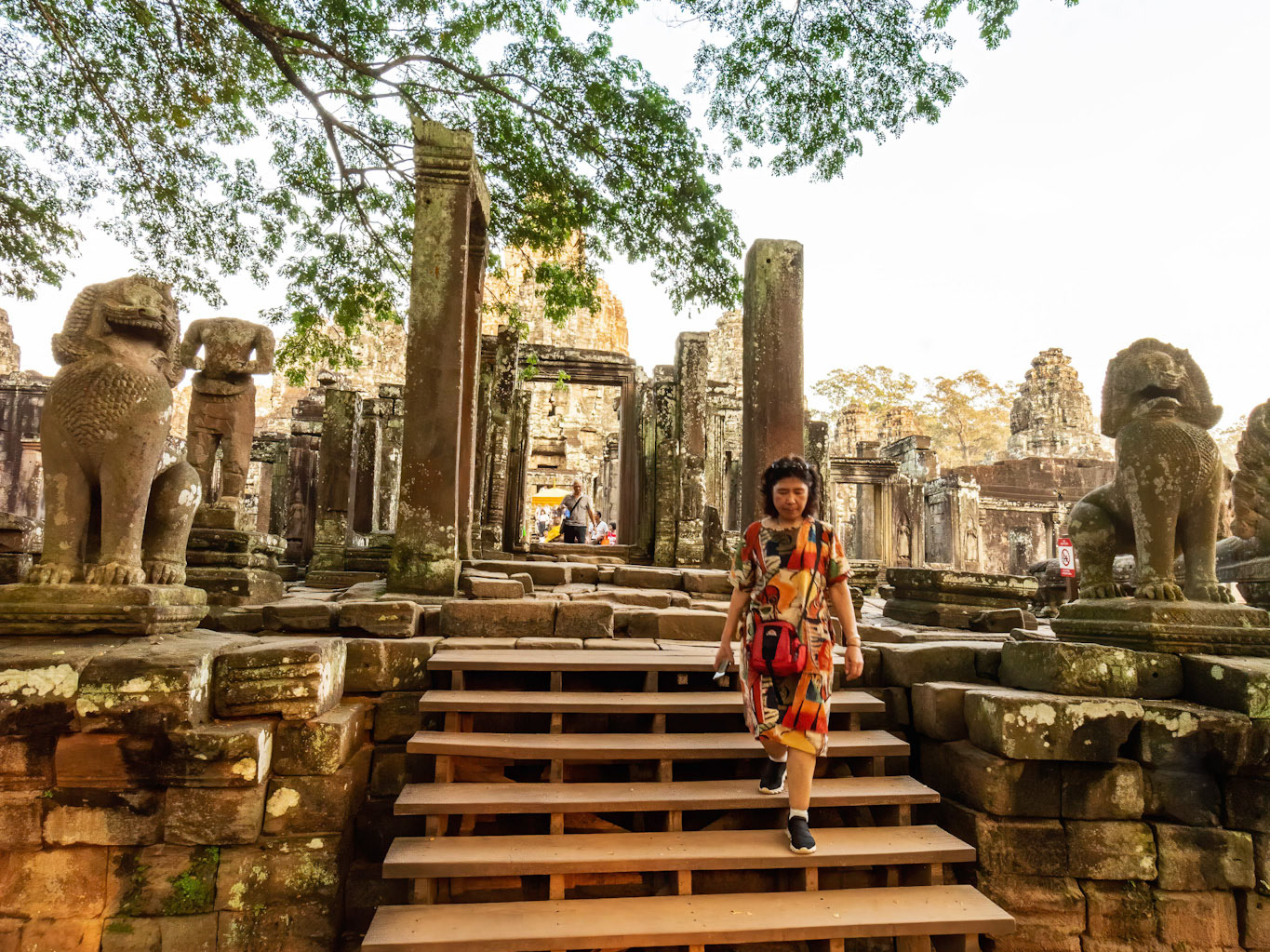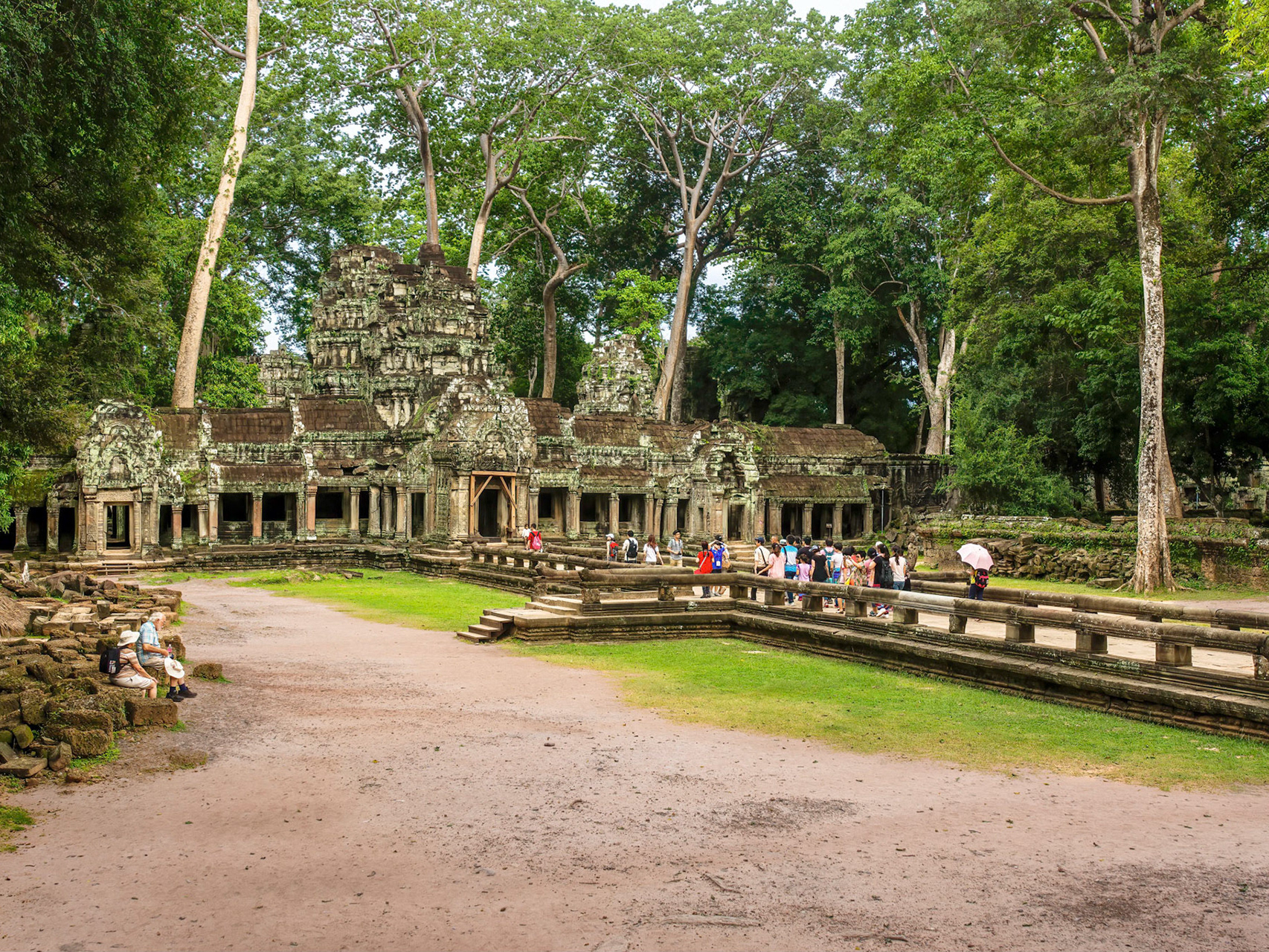My last full day in Cambodia, overcast with intermittent light rain but I wanted to go out and see a few temples even if the light wasn’t as good as I would have liked.
Thommanon Temple ប្រាសាទធម្មនន្ទ, close to the Victory Gate entrance into Angkor Thom, Thommanon is dedicated to Shiva and Vishnu and was built in the first half of the twelfth century, sometime around when work on Angkor Wat commenced. See Wikipedia and Oriental Architecture.
Srah Srang ស្រះស្រង់ (Royal Bath) is a small baray (but a big bath), which was excavated in the mid-tenth century and “modified around the year 1200 by Jayavarman VII, who added the laterite landing-stage at its western side”. See Wikipedia.
Banteay Kdei សាទបន្ទាយក្តី, opposite the western end of Srah Srang, the name literally translates as A Citadel of Chambers and is also “known as Citadel of Monks' cells”. Oriental Architecture says “[t]here is no record of why it was built— or by whom” but dates it to the “mid 12th-early 13th centuries”. Wikipedia seems to agree with Oriental Architecture but echos Michael Freeman and Claude Jacques in their book Ancient Angkor that it has architectural similarities to “to the style of the Ta Prohm and Preah Khan temples” and that it was probably built “on the site of a 10th-century temple built by Rajendravarman”. Vegetation covered it for several centuries, which was cleared away by the French in 1920-22.
Prasat Kravan ប្រាសាទក្រវ៉ាន់, “was built in 921 by a group of nobility … of brick and plaster” and has “unique interior brick bas-reliefs, which are not found anywhere else at Angkor” See Oriental Architecture.
